Alfresco
What Is Alfresco in Art? Understanding the Style!
Wondering what Alfresco in art entails? Discover the captivating outdoor painting style that captures nature's essence and the influence of ancient civilizations.
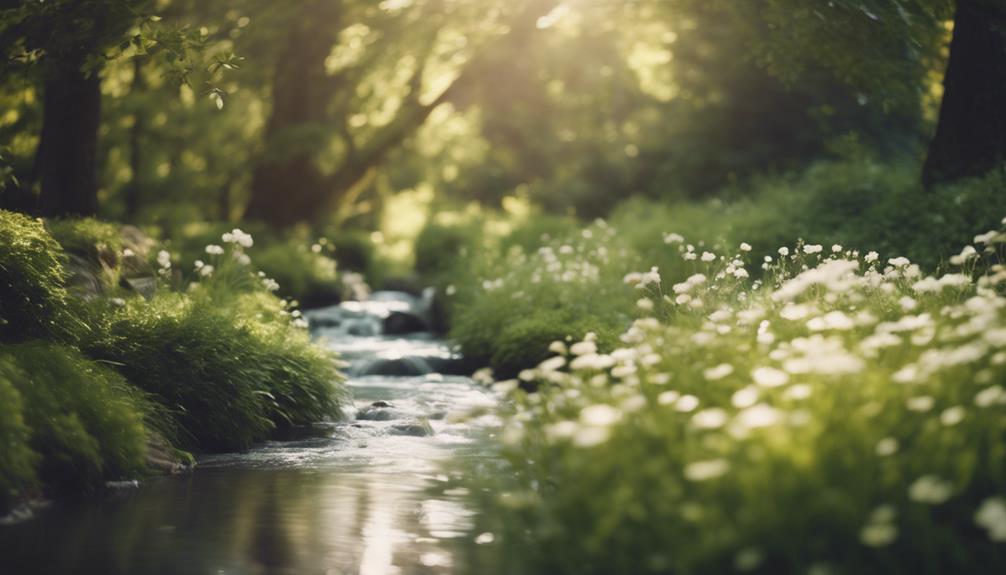
In art, Alfresco refers to a painting style that encompasses outdoor techniques originating from ancient civilizations, particularly the Italian Renaissance. This method captures nature's essence by incorporating elements like light, shadows, and the immediate surroundings. Prominent artists such as Michelangelo and Raphael have showcased the potential of Alfresco painting through stunning murals. This style emphasizes authenticity and immediacy, with a focus on natural elements. The interplay of light and shadows adds depth and realism to Alfresco artworks. By understanding its historical origins and characteristics, you gain insight into a rich artistic tradition that continues to influence modern interpretations and art movements.
Key Takeaways
- Alfresco art involves outdoor painting techniques with a focus on natural elements.
- Light and shadows play a crucial role in creating realism and depth in alfresco paintings.
- Artists adapt to changing light conditions and weather when working outdoors.
- Quick decision-making is essential to capture the essence of the moment in alfresco art.
- Limiting the color palette helps convey the nuances of natural light effectively in alfresco paintings.
Historical Origins
Explore the historical origins of alfresco painting, tracing back to ancient civilizations like the Minoans who first embraced this art form. In the grand tapestry of Art History, the roots of alfresco painting extend deep into the past, with ancient Romans also contributing to its early development. However, it was during the Italian Renaissance that this technique truly flourished, becoming a hallmark of the era's artistic expression.
Visionaries like Michelangelo and Raphael showcased the immense potential of alfresco painting, using it to create breathtaking murals that still awe viewers today. The intricate process of grinding dry-powder pigments in water to form colors that fuse with freshly applied plaster epitomizes the essence of alfresco painting. This meticulous technique ensures that the colors become an integral part of the wall, offering longevity and vibrancy to the artwork.
Additionally, alfresco painting's affinity with plein air painting, capturing the essence of natural light and surroundings, further enriches its historical significance in the realm of artistic endeavors.
Characteristics of Alfresco Style
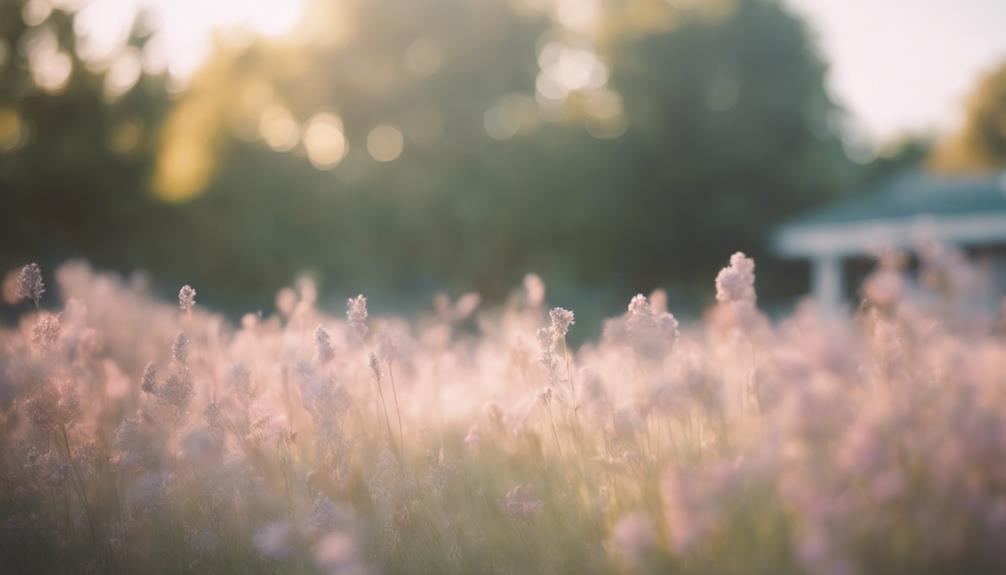
When exploring the characteristics of Alfresco style in art, you'll encounter three key points:
- Outdoor painting techniques
- Natural elements integration
- The play of light and shadows
These aspects form the foundation of Alfresco art, guiding artists to capture the essence of nature in their work.
Outdoor Painting Techniques
Utilizing natural light and the surrounding environment, alfresco painting techniques involve capturing the essence of a scene with a focus on light, color, and atmosphere. Artists practicing this style immerse themselves in the outdoor environment, allowing them to observe and depict the ever-changing conditions such as weather, season, and time of day.
This technique emphasizes spontaneity and immediacy, enabling artists to directly observe and translate nature onto their canvas.
Alfresco painting is a significant aspect of art history, contributing to the development of plein air painting and Impressionism. As artists venture outdoors to paint, they aren't only capturing the visual elements but also the essence and mood of the scene.
This direct interaction with nature adds a distinctive quality to the artwork, infusing it with a sense of vitality and authenticity that's hard to replicate in a studio setting.
Natural Elements Integration
Integrating natural elements such as landscapes, skies, and lighting is a defining characteristic of the alfresco style in art. Let's explore how artists embrace these elements to convey the beauty of the outdoors:
- The alfresco style captures the essence of natural surroundings, immersing the viewer in the environment.
- Artists venture outdoors to paint, allowing them to observe and depict nature's fleeting moments authentically.
- Through direct observation, alfresco artworks showcase the artist's deep connection with the environment.
- The integration of natural elements enables artists to convey the atmospheric effects and textures of outdoor scenes with immediacy.
- Alfresco paintings often emphasize the interplay of light and shadow, enhancing the realism and depth of the artwork.
Light and Shadows
The alfresco style in art vividly portrays the dynamic interplay between light and shadows in outdoor scenes. Artists adeptly capture the natural dance of sunlight and shadows on their subjects, using the nuances of natural light to infuse immediacy and atmosphere into their works. Shadows play a crucial role in alfresco paintings, serving to define forms, introduce depth, and enhance visual intrigue. By emphasizing the relationship between light and shadows, alfresco art achieves heightened realism and vibrancy, drawing viewers into the scene with its lifelike qualities.
| Light and Shadows in Alfresco Art | ||
|---|---|---|
| – Emphasis on natural light | – Play of sunlight | – Shadows defining forms |
| – Creation of immediacy | – Atmosphere enhancement | – Depth introduction |
| – Realism and vibrancy enhancement | – Visual intrigue | – Lifelike qualities |
Tools and Materials Used
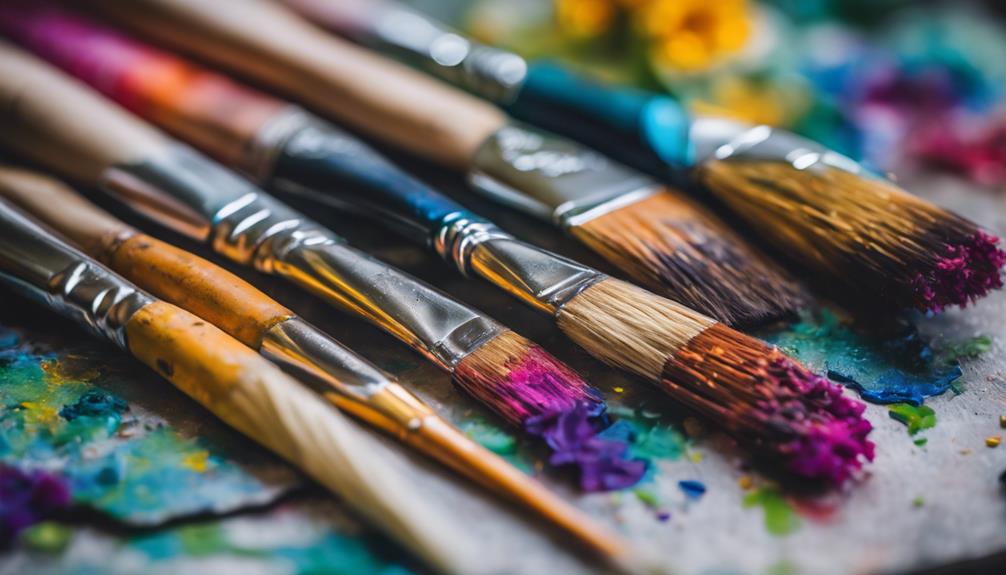
When exploring the tools and materials used in alfresco art, understanding the essentials is vital.
Artists often rely on specific tools to achieve the intricate details and corrections required in this style.
Essential art materials such as oil paints play a significant role in capturing the immediacy and essence of plein air painting.
Tools for Alfresco Art
Basic tools essential for creating alfresco art include:
- Brushes: Essential for applying pigments onto the plastered surface.
- Pigments: Ground with water to create vivid colors that bond with the wet plaster.
- Plaster: Applied using special tools like trowels and spatulas to create a smooth painting surface.
- Water: Used in pigment mixing and setting the colors into the plaster.
Artists employ special trowels and spatulas to apply and smooth plaster onto walls before painting in the alfresco style. The pigments are meticulously ground with water to produce vibrant colors that become permanent once set in the wet plaster.
The utilization of water-based pigments in alfresco art results in a matte finish that's well-suited for both outdoor and indoor murals. Techniques like buon fresco demand precise plaster application and color mixing to achieve durable and long-lasting artworks.
Essential Art Materials
Moving from tools specifically for alfresco art creation, let's now focus on the tools and materials essential for outdoor painting. Alfresco artists rely on a selection of key supplies to bring their creative visions to life amidst nature's backdrop.
Oil paints, a variety of brushes for different textures, easels for stability, and canvas or paper for the artwork's foundation are fundamental components. A palette serves as the artist's mixing board, while a portable paint kit enables mobility and convenience in outdoor settings.
To capture the essence of natural light and atmosphere accurately, artists often limit their color palette, allowing them to convey the nuances of their surroundings effectively. Some plein air painters utilize oil sketches to swiftly capture the ever-changing conditions and light effects found in outdoor environments.
Despite the challenges posed by shifting weather and light, alfresco painting offers artists the freedom to work on location, fostering spontaneity and a deeper connection with their subjects.
Techniques for Outdoor Painting
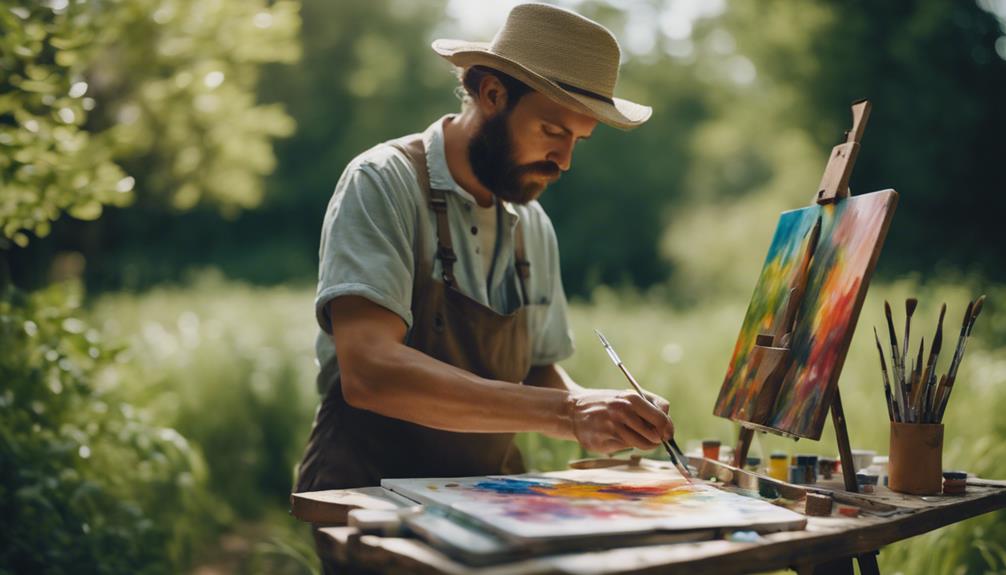
To master techniques for outdoor painting, artists must embrace the dynamic challenges of working directly in nature.
When painting alfresco, consider the following:
- Adapt to Changing Light: Nature's light shifts rapidly, influencing colors and shadows. Learn to adjust your palette accordingly to capture the scene authentically.
- Embrace the Elements: Weather plays a significant role in outdoor painting. Be prepared for wind, rain, or sun, and use these elements to enhance your artwork.
- Quick Decision-Making: Plein air painting demands quick decisions. Develop the ability to make swift brushstrokes and decisions to capture the essence of the moment.
- Study Atmospheric Effects: The outdoor environment offers unique atmospheric effects. Practice observing and depicting the subtle changes in light and atmosphere.
- Seek Inspiration from Nature: Nature is a boundless well of inspiration. Let the serenity and beauty of the outdoors guide your artistic expression.
Famous Alfresco Artists
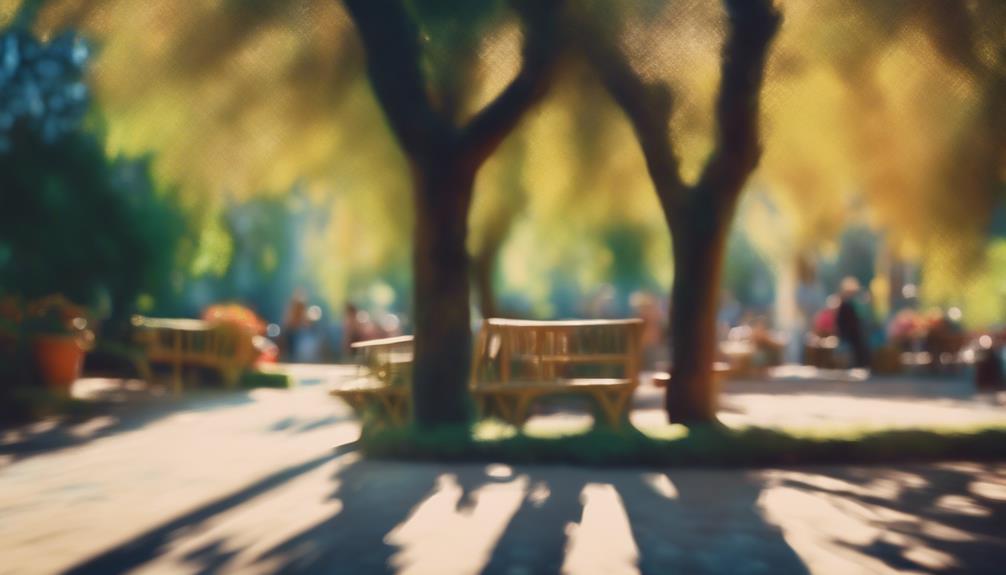
Explore the legacy of renowned alfresco artists who've shaped the art world with their mesmerizing outdoor masterpieces.
One notable figure in alfresco art is John Constable, recognized for his exquisite landscapes painted en plein air. These artists embraced the alfresco style to intimately connect with nature and capture its essence authentically.
Alfresco painting allows for a direct observation of the ever-changing light and atmosphere, enabling artists to bring a sense of immediacy and vibrancy to their works. This approach gained significant traction in the 19th century, as artists sought to break free from the confines of studios and embrace the beauty of the natural world.
Utilizing oil sketches, alfresco artists could swiftly capture fleeting moments in nature, infusing their works with a sense of spontaneity and raw emotion.
Through their dedication to painting outdoors, these famous artists have left an indelible mark on the art world, inspiring generations of creators to connect deeply with the world around them.
Impact on Art Movements

Embracing the Alfresco style in art greatly influenced various art movements by capturing natural light and atmosphere directly. This approach revolutionized the way artists approached their work, leading to significant shifts in artistic expression and technique.
The impact of plein air painting on art movements can be summarized as follows:
- Impressionism: Artists like Monet and Pissarro embraced plein air painting to depict fleeting moments and changing light, laying the foundation for the Impressionist movement.
- Realism: The practice of painting alfresco allowed for more accurate representations of landscapes and scenes, contributing to the development of Realism in art.
- Post-Impressionism: The immediacy and spontaneity of plein air painting influenced Post-Impressionist artists to focus on capturing the essence of a moment rather than intricate details.
- Modern Art Movements: The emphasis on capturing the essence of a scene directly impacted modern art movements, highlighting the importance of authenticity and spontaneity.
- Contemporary Art: Even today, plein air painting remains popular among contemporary artists seeking to connect with nature and infuse vibrancy and authenticity into their works.
Modern Interpretations
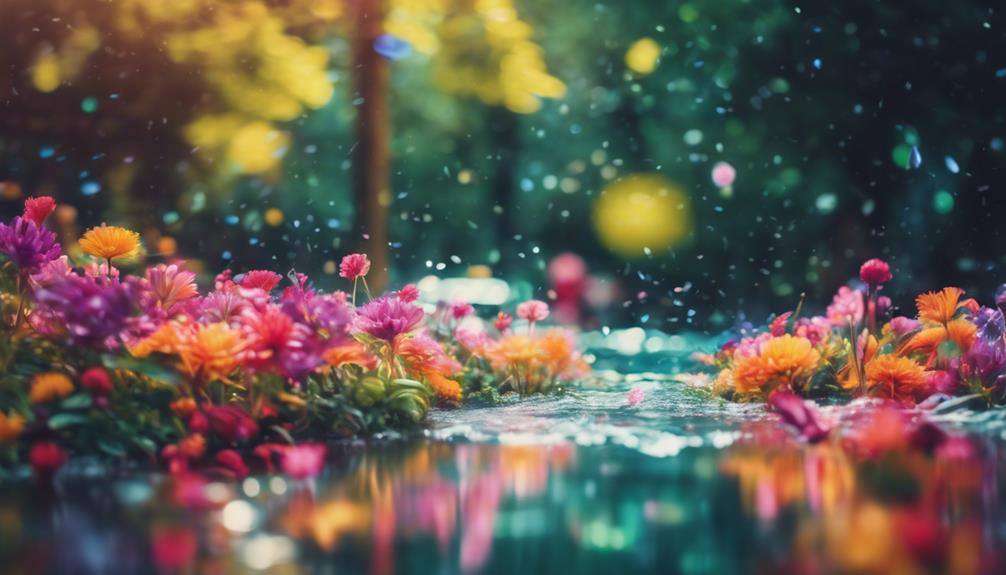
Modern interpretations of alfresco painting in art involve contemporary artists pushing the boundaries of traditional techniques by exploring outdoor settings and experimenting with various mediums. These artists are not limited to the constraints of indoor studios but instead embrace the elements as integral parts of their creative process. By combining traditional fresco techniques with modern mediums such as acrylics or spray paint, they create unique artworks that blend classical and contemporary styles seamlessly.
| Modern Interpretations of Alfresco Art |
|---|
| Embracing outdoor settings |
| Experimenting with different mediums |
| Evolving to street art murals |
| Utilizing natural elements |
| Focusing on environmental themes |
Moreover, alfresco art has expanded beyond traditional frescoes to include street art murals, public installations, and outdoor gallery exhibitions. This evolution showcases the adaptability of alfresco painting in reflecting modern themes and engaging with audiences in innovative ways. Contemporary alfresco artists often draw inspiration from nature, incorporating elements like sunlight, wind, and rain into their works, creating a dynamic and interactive artistic experience. Additionally, many modern alfresco artworks address environmental concerns, emphasizing the interconnectedness between art, nature, and sustainability.
Tips for Beginners
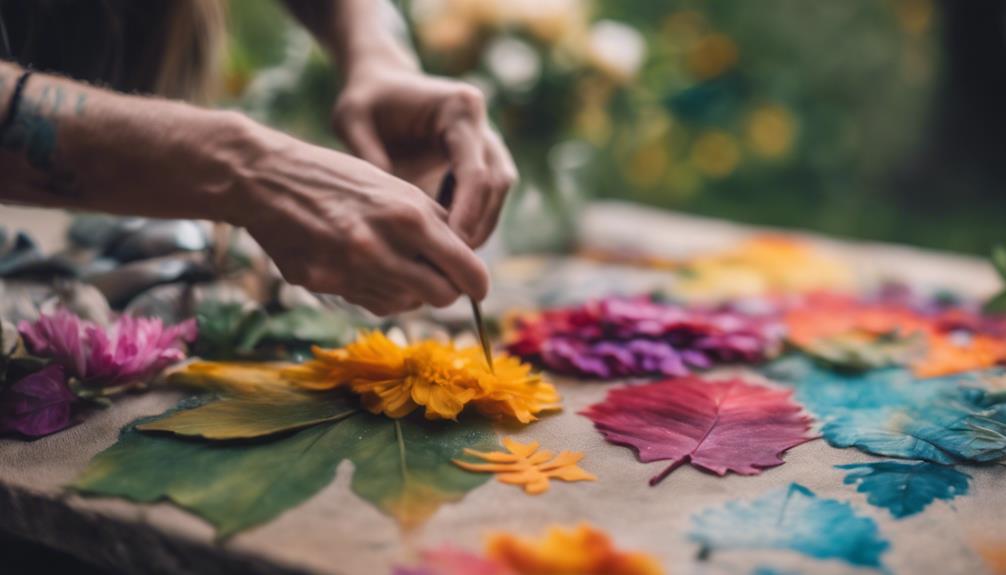
If you're new to alfresco painting, begin by selecting a simple subject to capture the essence of nature directly from the outdoors.
To help you get started, here are some tips for beginners:
- Choose a Simple Subject: Opt for uncomplicated scenes like a single tree, a flower, or a nearby landscape to ease into outdoor painting.
- Set Up a Portable Easel: Make sure to have a portable easel that can easily be carried to your chosen outdoor painting location.
- Use a Limited Color Palette: Start with a few basic colors to simplify your painting process and focus on capturing the essence of the scene.
- Sketch Quickly and Loosely: Practice sketching in a loose and rapid manner to capture the energy and movement of the outdoors.
- Observe Light and Shadow: Pay attention to how light and shadow play on your subject, as they're essential elements in creating depth and realism in your alfresco artwork.
Preserving Alfresco Art
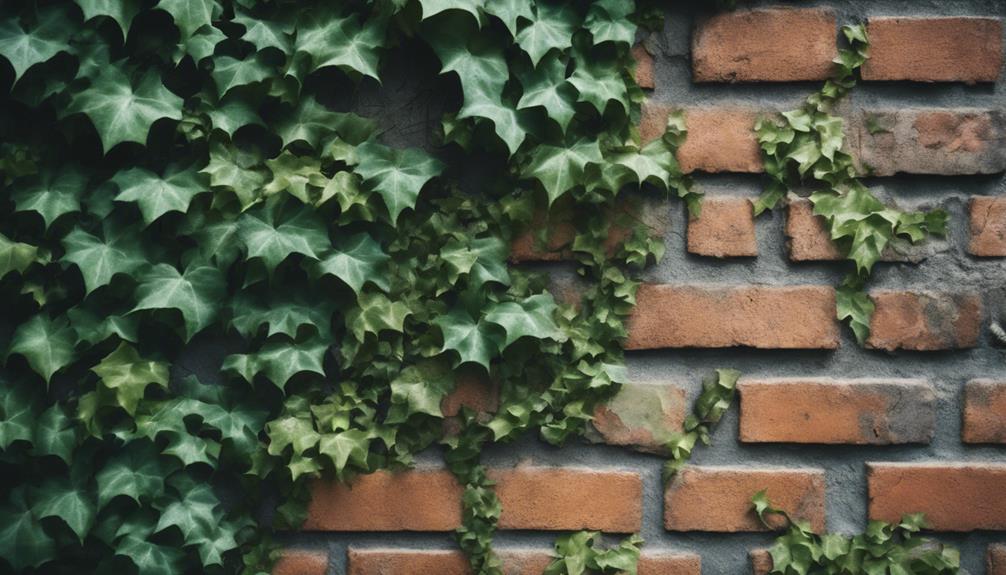
To safeguard alfresco art effectively, it's essential to employ techniques that protect outdoor paintings from natural elements. Outdoor artworks are particularly vulnerable to environmental factors such as sunlight, rain, and wind, which can lead to fading, water damage, and erosion.
Utilizing methods like varnishing and regular maintenance can greatly prolong the lifespan of alfresco pieces. These techniques create a protective barrier that shields the artwork from harm, ensuring its longevity.
Moreover, outdoor murals and frescoes often necessitate consistent cleaning and restoration to prevent deterioration. Conservation efforts play a crucial role in stabilizing the artwork, addressing any damage, and securing its long-term preservation.
Collaboration among artists, conservators, and institutions is key in maintaining the integrity of alfresco art. By working together, these stakeholders can implement strategies to protect outdoor masterpieces and guarantee that they can be enjoyed for generations to come.
Frequently Asked Questions
What Does Al Fresco Mean in Art?
Al fresco in art means painting on wet plaster. It involves applying pigments on fresh plaster, creating durable murals. Colors blend with the wall as they dry. The term comes from Italian, meaning 'in the fresh air.'
What Is Fresco Style in Art?
Fresco style in art involves painting water-based pigments on freshly applied plaster, creating durable and matte murals. You can enjoy the process by applying three coats of plaster, transferring designs, and troweling a final smooth coat for a lasting masterpiece.
What Is an Example of a Fresco Art?
When exploring fresco art, consider masterpieces like Michelangelo's 'The Creation of Adam' in the Sistine Chapel. This technique involves applying pigments on fresh plaster, offering durability and vibrant colors. Giotto and Fra Angelico also excelled in this style.
What Best Describes What Fresco Is?
Imagine fresco as a timeless mural technique, blending pigments with wet plaster for long-lasting art. It's an Italian marvel, requiring skillful plaster coats for vibrant colors. Fresco Secco skips wet prep for detailed work.
Conclusion
To sum up, delving into the alfresco style in art offers a unique perspective on outdoor painting techniques and historical influences.
Remember, Rome wasn't built in a day, and mastering the art of alfresco painting takes time, patience, and dedication.
By studying the characteristics, tools, and techniques used by famous alfresco artists, you can develop your own style and create stunning outdoor masterpieces.
So, grab your brushes, head outside, and let your creativity flourish in the open air!
Alfresco
What Is Alfresco Painting? Artistic Techniques Explained!
An exploration of alfresco painting, a historical technique rooted in the Renaissance, revealing artistic secrets that elevate outdoor artistry.

Explore the historical artistry of alfresco painting, stemming from the Renaissance in Italy. Artists like Giotto and Michelangelo led the way, painting on wet plaster to craft vivid frescoes. For this technique, you'll need outdoor-grade paints such as oil paints, acrylics, or watercolors, along with suitable brushes and water containers. Prepping the plaster surface meticulously is essential for a flawless finish. As you paint, remember to use soft brushes on wet plaster, allowing pigments to chemically bond with the surface for depth. Delve into this technique further to uncover the intricate details and techniques that make alfresco painting truly unique.
Key Takeaways
- Originates from Renaissance Italy, involving painting on wet plaster.
- Requires outdoor-grade paints, suitable brushes, water containers, and portable easels.
- Involves drawing directly on wet plaster and using soft brushes for blending.
- Fresh plaster crucial for strong paint bonding, vibrant colors, and longevity.
- Preservation entails curing, sealing, weather considerations, and regular maintenance.
Origins of Alfresco Painting
The origins of alfresco painting trace back to Italy during the Renaissance period, where artists pioneered the technique of painting on wet plaster to create enduring murals. This artistic practice, known as fresco, emerged as a popular method for decorating the walls and ceilings of churches, palaces, and public buildings in Italy.
During the Italian Renaissance, artists like Giotto and Michelangelo utilized fresco painting to produce magnificent works of art that showcased both their technical skill and creative vision.
Fresco painting involves applying water-based pigments on freshly laid wet plaster, allowing the colors to become an integral part of the surface as they dry. Artists would transfer their designs onto the wet plaster from a cartoon or outline drawing, enabling them to create intricate and long-lasting murals.
This technique not only provided a durable finish but also allowed for the creation of monumental and detailed artworks that adorned various architectural settings, contributing to the rich artistic legacy of the Italian Renaissance.
Materials Needed for Alfresco Painting
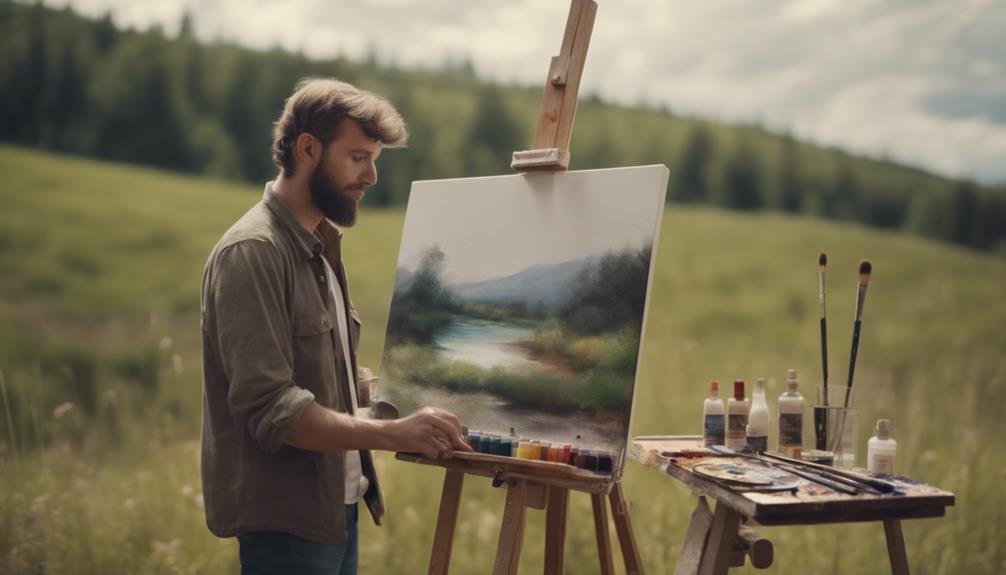
For alfresco painting, you'll need specific materials to create your artwork outdoors. Common materials for fresco painting include outdoor-grade paints such as oil paints, acrylics, or watercolors. These paints are chosen based on the artist's preferences and the desired effect.
In addition to paints, you'll require brushes suitable for outdoor use, water containers for mixing paints, and portable easels to support your canvas or surface.
When painting alfresco, the natural light and surroundings play a significant role in influencing the colors and atmosphere of your artwork. This medium allows artists to capture changing light, shadows, and textures in real-time, providing a unique artistic experience.
Remember that preparing the plaster surface adequately is essential before beginning your alfresco painting to maintain the longevity and quality of your artwork.
Preparing the Plaster Surface
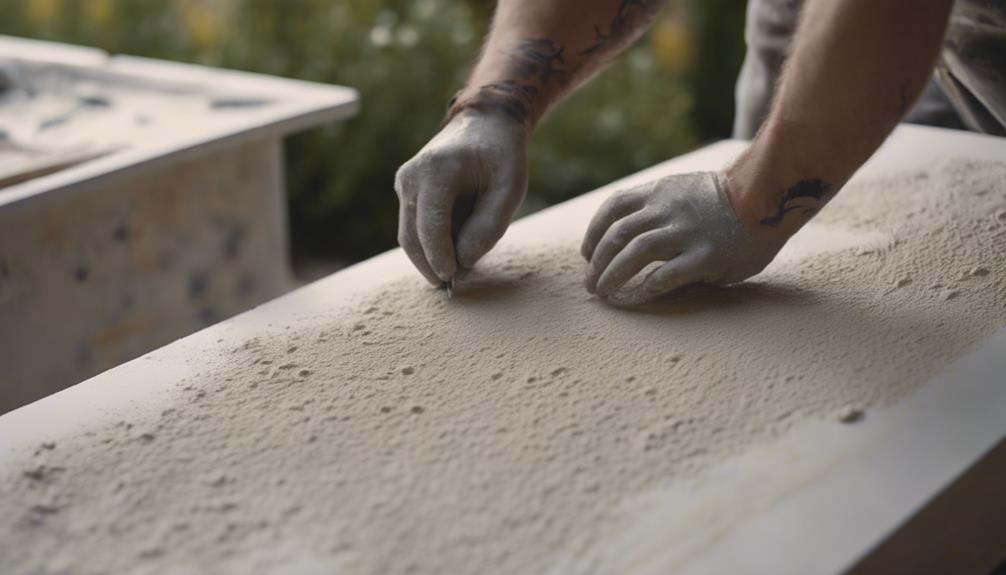
To start preparing the plaster surface for alfresco painting, ensure it's smooth and free of imperfections. This step is vital as the success of the painting relies heavily on the quality of the plaster surface.
Artists often employ traditional fresco techniques to achieve the desired smoothness and flawlessness required for alfresco painting. Ensuring the plaster surface is completely dry is essential before commencing the painting process, as any moisture can compromise the adhesion of the pigments to the surface.
Properly preparing the plaster surface not only enhances the aesthetic appeal of the final artwork but also contributes to its longevity. By meticulously attending to the details of the plaster surface, artists set a strong foundation for the application of water-based pigments, which is the hallmark of alfresco painting.
Drawing the Design on Plaster
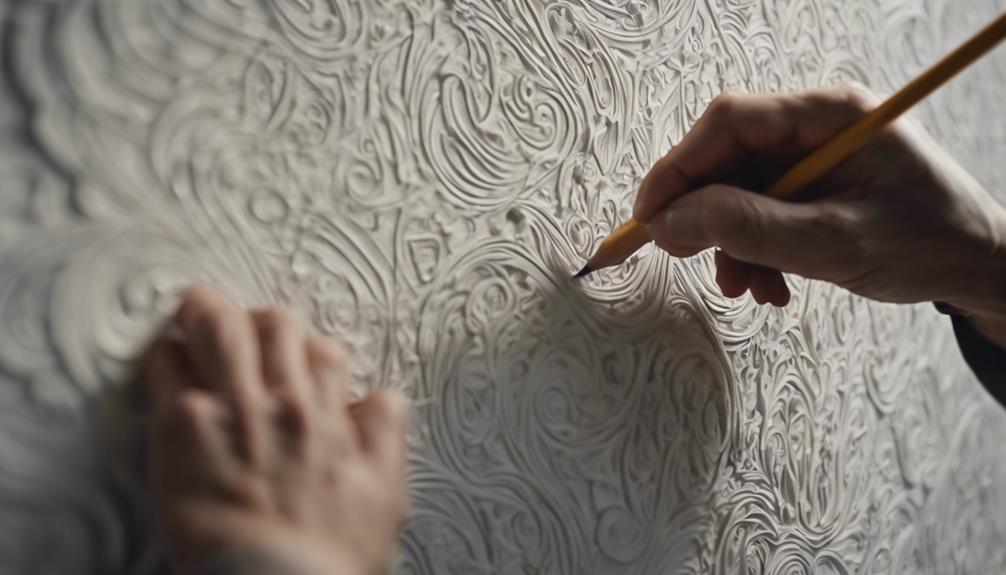
When drawing the design on plaster for alfresco painting, artists meticulously outline their vision directly onto the wet plaster surface. This technique for tracing serves as an essential guide for applying pigments and creating the mural.
Ensuring accuracy and cohesion in the final artwork, this step allows for the seamless integration of the design into the larger mural composition.
Plaster Design Preparation
Efficiently transferring the desired artwork onto the fresh plaster surface is a crucial step in the process of preparing the design for an alfresco painting. Artists utilize tools like brushes, pencils, or styluses to outline the design directly onto the prepared plaster surface.
These design outlines act as a roadmap for the artist, guiding them through the painting process in the alfresco technique. Precision and accuracy in this step are essential as they greatly impact the overall composition of the artwork.
Drawing the design on plaster marks the critical initial phase in creating vibrant and enduring alfresco paintings. By carefully tracing the design onto the plaster, artists lay the foundation for a visually captivating mural that withstands the test of time.
This meticulous process ensures that the artwork isn't only visually appealing but also structurally sound, enhancing its longevity and artistic impact.
Technique for Tracing
Using a sinopia sketch or cartoon, artists meticulously trace the design onto the fresh plaster surface to prepare for the alfresco painting process. Tracing is an essential step in fresco painting, as it allows artists to transfer the intricate details of their design onto the plaster with precision and accuracy.
By following the lines of the sketch or cartoon, artists can guarantee that the final composition reflects their original vision faithfully. This technique not only guides the artist during the painting process but also aids in the placement of elements within the composition. Through tracing, artists can achieve a level of detail and accuracy that would be challenging to attain freehand.
Ultimately, tracing plays a significant role in ensuring that the final fresco painting is a true representation of the intended design, capturing every nuance and detail with meticulous care.
Painting Techniques in Alfresco Painting
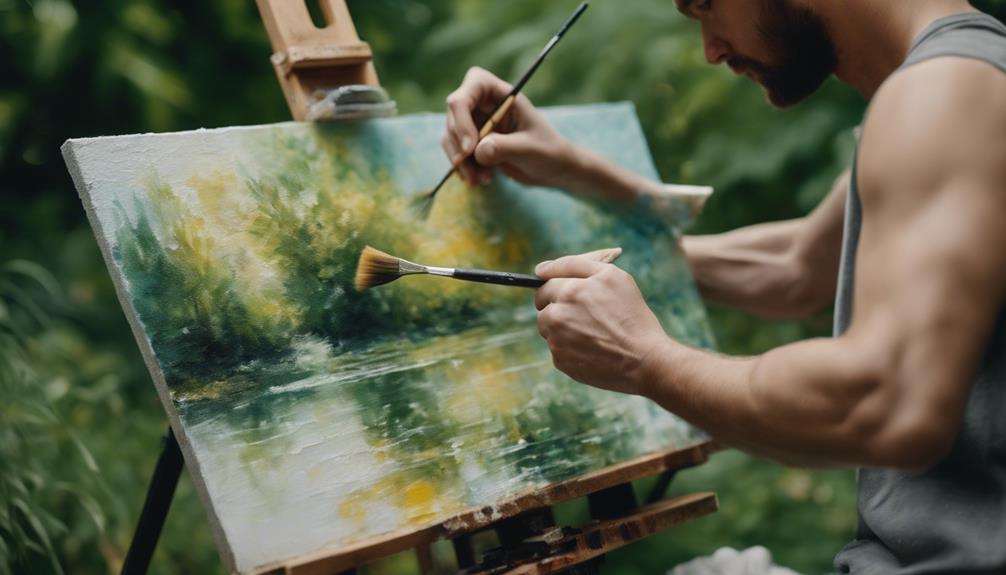
To achieve intricate details and vibrant colors in alfresco painting, artists employ specific brushwork techniques on the freshly applied plaster. Working on wet plaster allows the pigments to bond chemically with the surface, ensuring the artwork becomes a permanent part of the wall in mural painting.
The technique involves using soft brushes to apply pigments to the wet surface, with the colors becoming brighter as the plaster dries. Artists must work swiftly and confidently to capture the desired hues and textures before the plaster sets. By blending and layering pigments on the wet surface, they can achieve depth and dimension in the mural.
This method of painting on wet plaster gives the artwork a matte finish and durability that's ideal for large-scale murals. The process of painting on wet plaster requires skill and precision to create lasting and visually stunning pieces of art.
Importance of Fresh Plaster in Painting
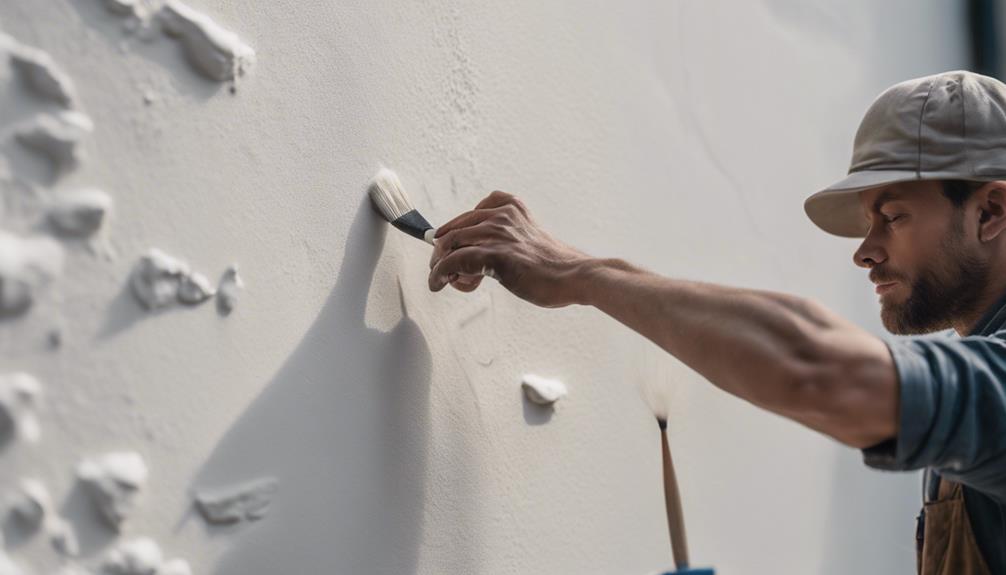
Fresh plaster plays a vital role in alfresco painting by ensuring that the paint adheres securely to the wall surface, enhancing its durability over time.
The porous nature of fresh plaster allows the pigments to be absorbed, creating a strong bond between the paint and the wall.
Artists find that painting on fresh plaster provides a smooth and receptive canvas for their artistic expression, resulting in vibrant and long-lasting colors on the wall.
Fresh Plaster Enhances
Enhancing the vibrancy and longevity of painted colors, fresh plaster plays an essential role in alfresco painting techniques. When working with fresco painting, fresh plaster acts as a pivotal foundation that allows the colors to bond effectively, creating lasting artwork. The porous nature of fresh plaster enhances the vibrancy of the colors, ensuring they remain vivid over time. Additionally, painting on fresh plaster provides artists with a smooth and even surface to work on, allowing for intricate details and precise brushwork.
To further illustrate the importance of fresh plaster in alfresco painting, consider the following table:
| Benefits of Fresh Plaster in Alfresco Painting |
|---|
| Allows colors to bond effectively |
| Enhances color vibrancy and longevity |
| Provides a smooth surface for detailed work |
Painting Adhesion and Durability
For ideal adhesion and durability in alfresco painting, fresh plaster plays a critical role in bonding water-based pigments to the wall surface. In fresco painting, the application of fresh plaster serves as the foundation for the paint to guarantee effective bonding, ensuring a long-lasting finish.
The interaction between the fresh plaster and water-based pigments is essential for creating a strong bond that withstands the test of time. Without the use of fresh plaster, the paint may not properly set on the wall surface, leading to potential issues such as flaking or peeling over time.
Fresh plaster in alfresco painting isn't just a surface preparation step but a fundamental component in enhancing the vibrancy and longevity of the colors applied. It allows for a seamless integration of the paint into the wall, becoming a permanent part of the structure.
The meticulous attention to using fresh plaster guarantees a durable and visually striking outcome in fresco painting.
Curing and Sealing the Fresco
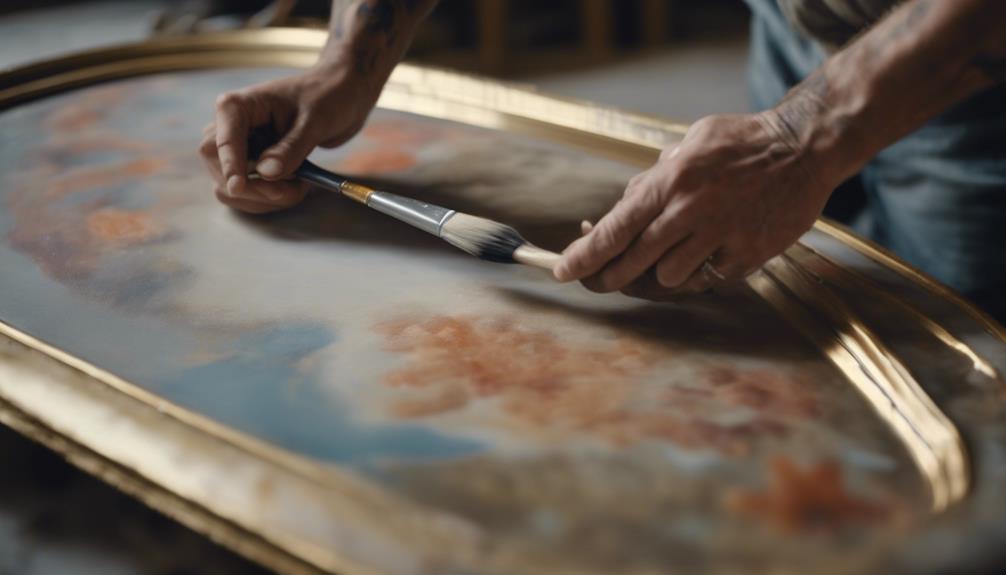
Curing and sealing the fresco is an essential final step in guaranteeing its longevity and preservation. The curing process involves allowing the fresco to dry naturally over several weeks. This period is vital for achieving full strength and durability as the pigments chemically bond with the plaster. Properly curing the fresco guarantees a lasting and vibrant artwork.
Sealing the fresco with a protective coating, such as a transparent glaze or wax, further enhances its longevity. This protective layer helps shield the fresco from environmental factors like dust, dirt, and moisture, preserving its colors and details for years to come. By properly curing and sealing the fresco, you aren't only maintaining its integrity but also ensuring its beauty withstands the test of time.
This meticulous process is fundamental for the long-term preservation of fresco paintings, making them a valuable and enduring art form.
Tips for Successful Alfresco Painting
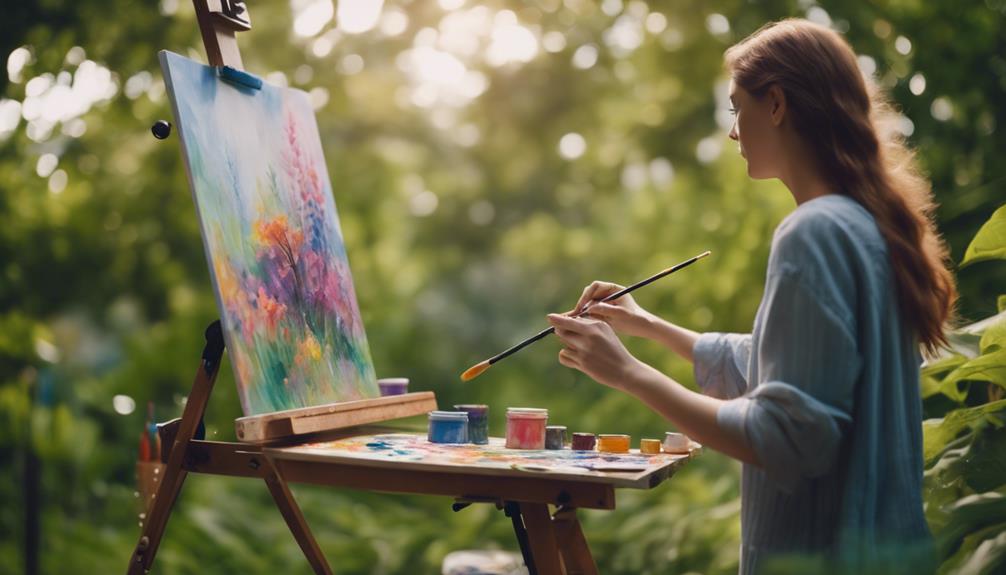
When starting alfresco painting, keep in mind that the choice of location can greatly impact your artwork's outcome.
Considering the weather conditions is essential for a successful painting session outdoors.
Location Choice Matters
Selecting the right location is key to ensuring successful alfresco painting, as it greatly impacts the outcome of your artwork. When choosing a spot for your outdoor painting session, consider factors such as lighting, scenery, and ambiance. Here are some tips to help you make an informed decision:
| Consideration | Description | Example |
|---|---|---|
| Lighting | Opt for locations with natural light sources to enhance colors and shadows. | Painting near a lake during sunset. |
| Scenery | Choose settings that inspire your creativity and complement your artistic vision. | A lush garden with vibrant flowers. |
| Ambiance | Look for places that provide a peaceful and inspiring atmosphere to focus on your art. | A quiet meadow with the sound of birds chirping. |
Weather Considerations Crucial
Considering weather conditions is crucial for successful alfresco painting. It directly impacts the quality and process of your artwork.
Temperature plays a significant role in determining the drying times of your paints. Extreme heat can cause them to dry too quickly, affecting the blending and overall finish of your piece. On the other hand, cold temperatures can prolong drying times, leading to potential smudging or smearing if not carefully monitored.
Additionally, humidity levels in the air can influence how your paints adhere to the canvas, impacting the richness and depth of colors achieved. It's advisable to work during times when the temperature is moderate, avoiding peak sunlight hours that can accelerate drying excessively.
Inspirational Examples of Alfresco Art
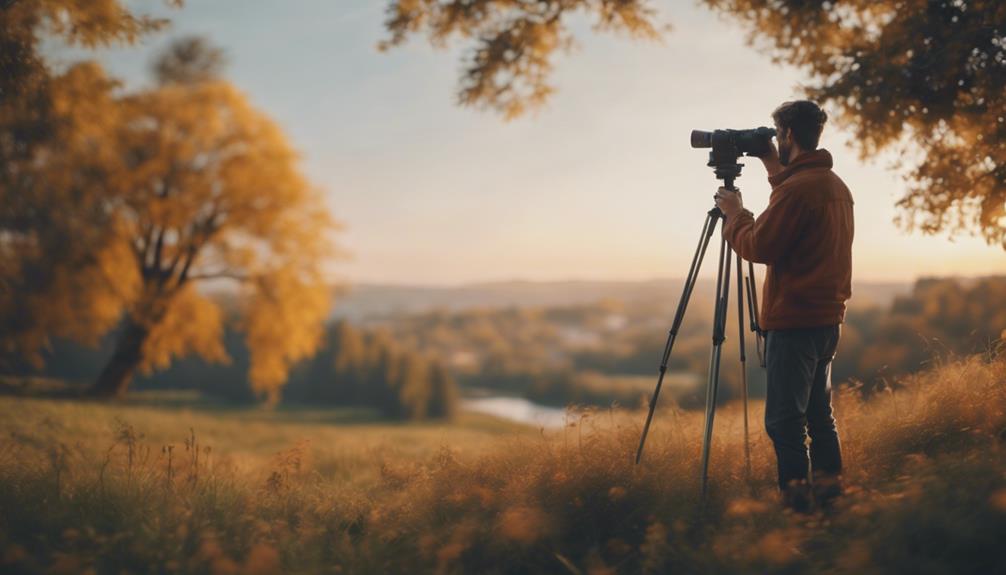
Explore a variety of awe-inspiring alfresco artworks that showcase the beauty and creativity of painting outdoors. Alfresco painting, with its roots in capturing the essence of nature, has produced some remarkable pieces throughout history.
One of the most iconic examples of alfresco art is Michelangelo's masterpiece in the Sistine Chapel. The intricate frescoes adorning the chapel's ceiling are a testament to the skill and dedication required for this painting technique.
Artists like Monet and Sargent also found inspiration in painting outdoors, using plein air techniques to convey the changing light and atmosphere in their works.
These influential artists paved the way for contemporary alfresco painters, who continue to create stunning pieces that blur the lines between art and nature. From vibrant landscapes to intimate portraits, alfresco art offers a unique perspective that can only be achieved by working directly from the natural world.
Preservation and Maintenance of Alfresco Paintings
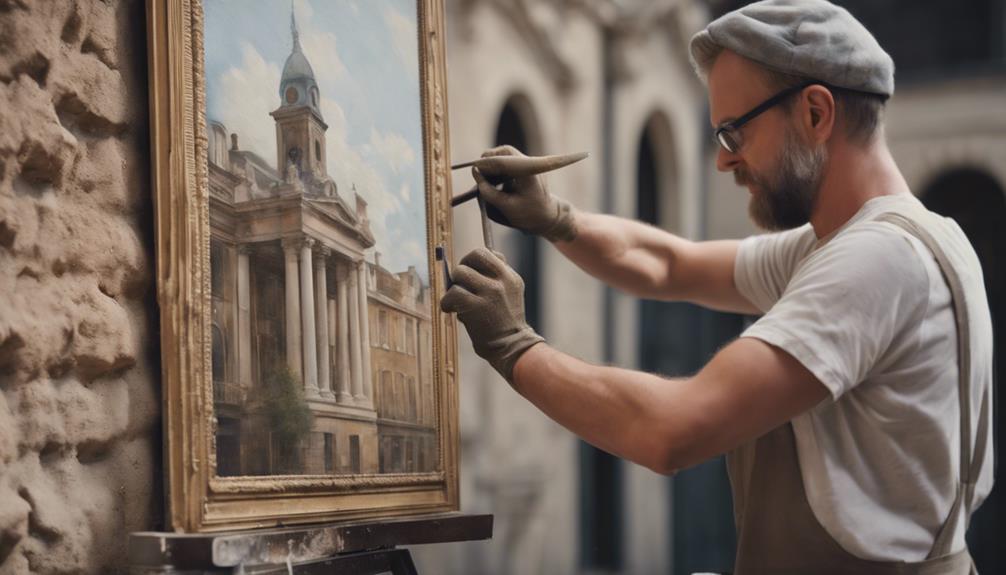
To guarantee the longevity and beauty of alfresco paintings, preservation and maintenance are crucial steps in protecting these artworks from environmental damage. Preservation of fresco paintings involves safeguarding them from weather elements such as rain, sun exposure, and temperature fluctuations.
It's essential to maintain these pieces by regularly cleaning them to remove dirt, grime, and pollutants that could harm the artwork over time. Applying protective coatings or sealants can help extend the lifespan of alfresco paintings and prevent color fading.
In cases where restoration is necessary, conservators may repair cracks, reattach loose paint, and address any structural issues to ensure the durability of the artwork. Professional conservators utilize specialized methods and materials to safeguard fresco paintings, ensuring that their beauty and historical significance are preserved for future generations to appreciate.
Frequently Asked Questions
What Is the Fresco Painting Technique?
The fresco painting technique involves applying water-based pigments on freshly applied plaster, creating durable murals. Artists grind dry-powder pigments in water to create colors that dry and set with the plaster, allowing for detailed artworks.
What Does Al Fresco Mean in Painting?
Imagine painting under the open sky, capturing nature's essence with each brushstroke. 'Al fresco' in painting means embracing the outdoors. Artists use this term to signify creating art in the fresh air, connecting with nature's beauty.
How Does an Artist Create a True Fresco Painting?
To create a true fresco painting, you meticulously apply water-based pigments on fresh plaster while transferring your design. Each day, you paint sections on wet plaster, ensuring colors become permanent as they dry within the surface.
Why Is Fresco Painting Significant?
Fresco painting is significant due to its durability and ability to create monumental murals. Artists like Michelangelo favored it during the Italian Renaissance. Applying water-based pigments on wet plaster makes colors permanent, allowing detailed work.
Conclusion
To sum up, alfresco painting is a timeless art form that requires skill, patience, and attention to detail.
As you commence on your own alfresco painting journey, remember that like a fresco, life is a canvas waiting to be painted with vibrant colors and intricate designs.
So, take inspiration from the masters of the past, embrace the process of creating something beautiful, and let your creativity shine through in every brushstroke.
Happy painting!
Alfresco
What Is Alfresco Roof? Functional and Stylish Designs!
Merging elegance and practicality, alfresco roofs elevate outdoor living with stylish designs and functional features, creating an inviting space for year-round enjoyment.
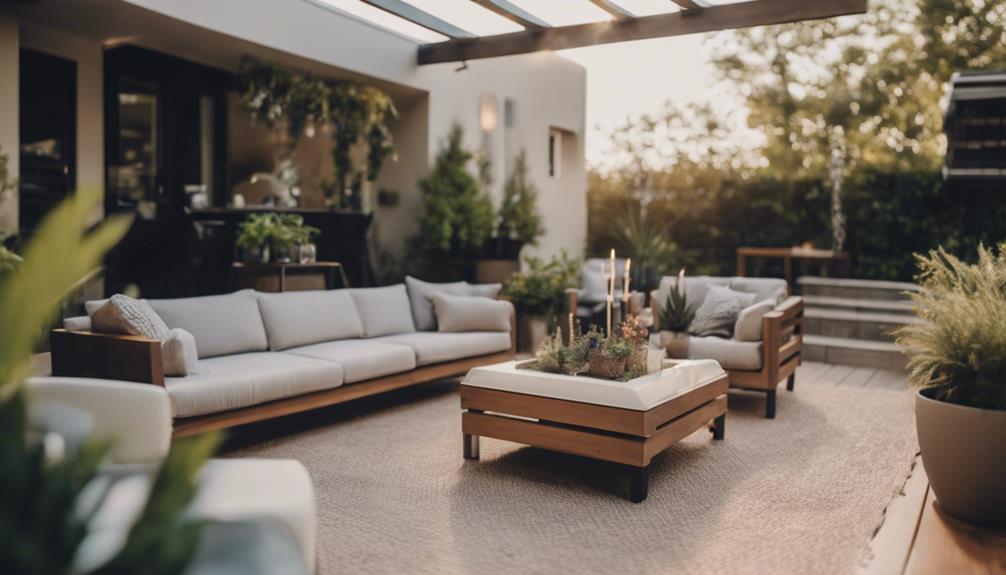
Elevate your outdoor space with an alfresco roof, merging practicality and elegance for an enhanced living environment. Alfresco roofs offer protection against the elements, integrating lighting options for ambiance and customizable features to expand your living area stylishly. Consider weatherproofing using durable materials and versatile designs adaptable to varying conditions. Enhance your alfresco experience with quality, weather-resistant furniture and stylish decor ideas to create a cozy retreat. Explore entertainment features, technology integration, and various zones to personalize your alfresco roof oasis. Discover the seamless blend of functionality and aesthetics for year-round outdoor enjoyment.
Key Takeaways
- Alfresco roofs offer protection and ambiance.
- Integrated lighting enhances atmosphere.
- Design flexibility for various weather conditions.
- Expand living space stylishly.
- Create functional and stylish outdoor retreats.
Benefits of Alfresco Roofs
Alfresco roofs offer a range of benefits that enhance the functionality and enjoyment of outdoor living spaces. Specifically, when it comes to outdoor dining, these structures provide invaluable protection from the elements, guaranteeing that your meals can be enjoyed in comfort regardless of the weather.
Patio covers integrated into alfresco roofs shield you and your guests from the harsh sun, rain, and wind, creating a pleasant environment for dining al fresco.
Moreover, the addition of integrated lighting in alfresco roofs allows you to adjust the ambiance for evening dining, enhancing the overall experience. With retractable features, these roofs provide flexibility, enabling you to adapt to changing weather conditions seamlessly.
Additionally, the ability to customize alfresco roofs with various materials and designs ensures that they can complement the style of your home, adding both practicality and aesthetic appeal to your outdoor space.
Maximize Space With Alfresco Roofing
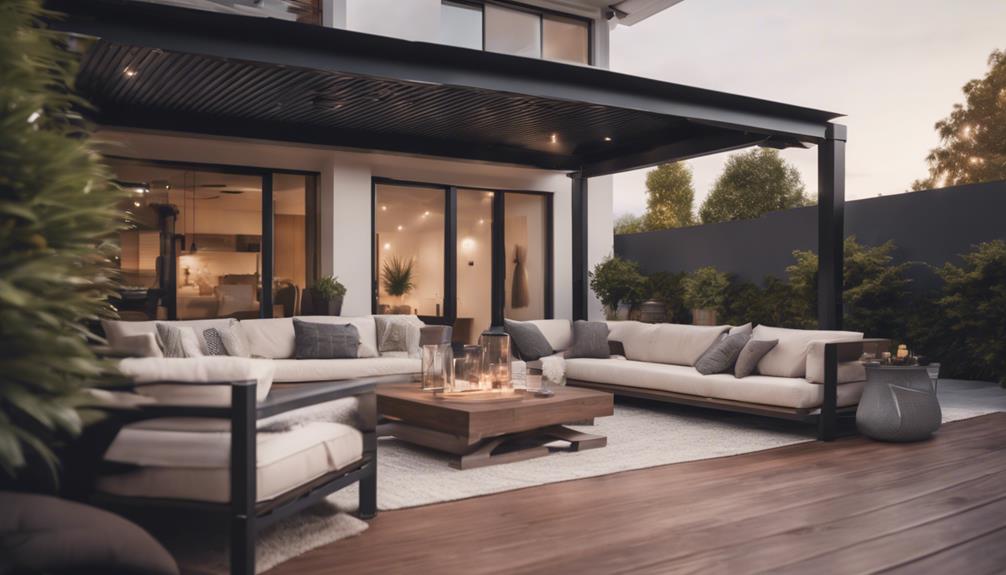
By utilizing alfresco roofing, you can effectively maximize your outdoor living space and create versatile areas for living and dining. Here are four ways alfresco roofing helps you make the most of your outdoor space:
- Expanded Living Area: Alfresco roofing allows you to extend your indoor living space seamlessly into the outdoors, providing a sheltered area for relaxation and entertainment.
- Protection from Elements: With a patio cover, you can enjoy your outdoor space regardless of the weather conditions, shielding you from the sun, rain, or wind.
- Versatile Dining Space: Alfresco roofing creates a designated area for outdoor dining, perfect for hosting gatherings or enjoying meals alfresco style.
- Year-Round Use: By adding alfresco roofing, your outdoor living space becomes usable throughout the year, enhancing the overall functionality and enjoyment of your property.
Weatherproofing Considerations for Alfresco Roofs
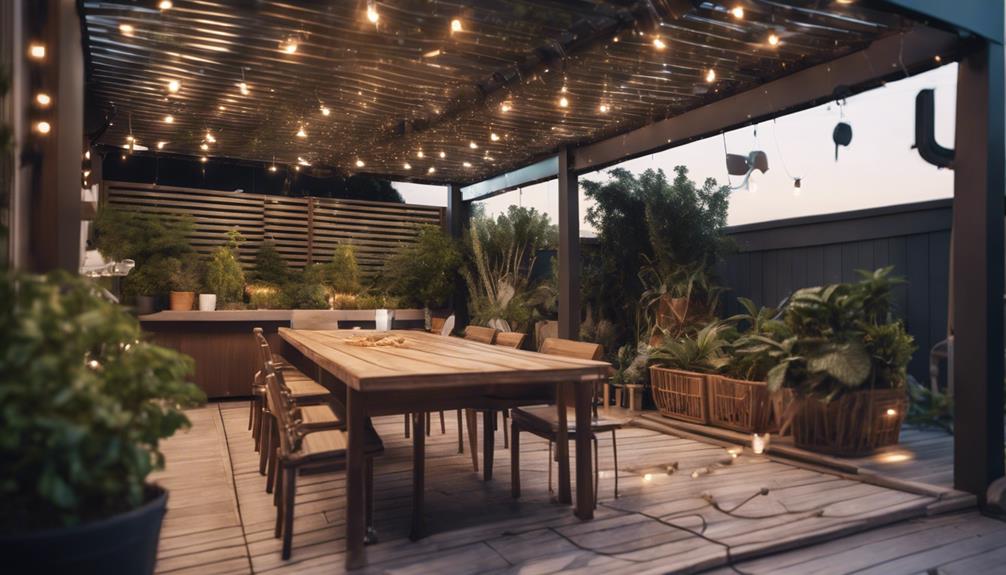
How can you guarantee that your alfresco roof is effectively weatherproofed for all seasons?
Weatherproofing considerations for alfresco roofs are vital to validate your outdoor space is protected from the elements. Using materials resistant to sun, rain, and wind is essential in creating a durable and functional alfresco roof.
By incorporating fully covered and partially covered roofing, you can enhance the usability of your alfresco area throughout the year. Shelter from the elements not only increases comfort but also extends the functionality of your outdoor space.
It's important to design your alfresco roof with weather-resistant elements to withstand varying weather conditions and maintain its integrity over time. Proper weatherproofing not only allows you to enjoy your alfresco space in all seasons but also adds longevity to your outdoor living area, providing a space that's both practical and enjoyable regardless of the weather.
Stylish Lighting Options for Alfresco Roofs
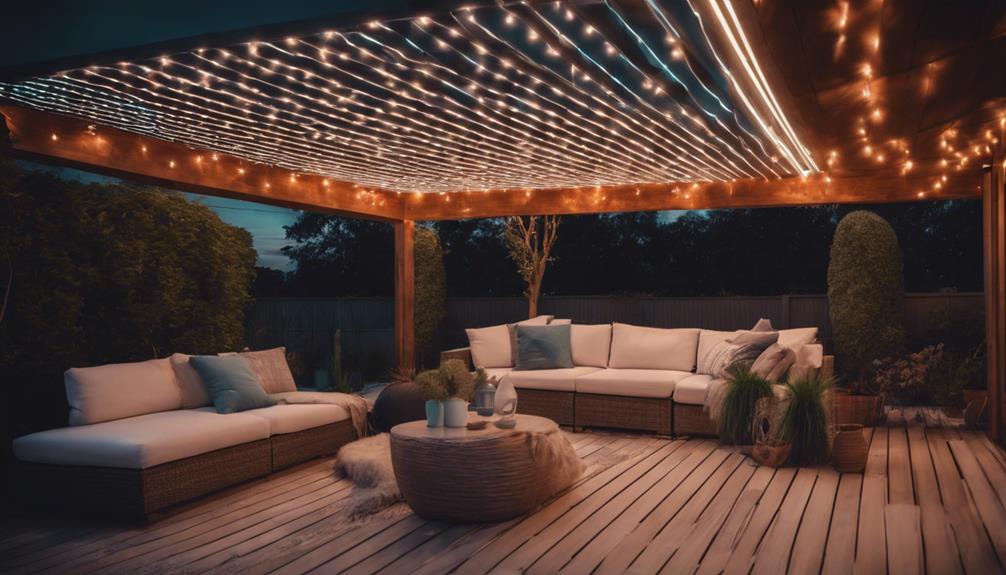
When considering lighting options for your alfresco roof, think about incorporating bright LED fixtures for a contemporary touch and solar-powered lanterns for an eco-friendly choice.
These lighting solutions can enhance the ambiance of your outdoor dining or relaxation area while providing energy-efficient illumination.
Bright LED Fixtures
Enhance the ambiance of your alfresco roof with stylish and energy-efficient bright LED fixtures. LED fixtures are a popular choice for alfresco roofs due to their longevity and low energy consumption. These lights can be seamlessly integrated into the design of your alfresco roof, offering a modern look that enhances the overall aesthetic. LED lighting options come in various styles, including strip lights, spotlights, and pendant lights, catering to different design preferences and creating a customized lighting solution to achieve the desired atmosphere in your alfresco dining area.
- Longevity: LED fixtures are known for their long lifespan, reducing the need for frequent replacements.
- Energy Efficiency: These lights consume less energy, helping you save on electricity bills while being environmentally friendly.
- Design Integration: LED fixtures can be discreetly incorporated into the structure of your alfresco roof, maintaining a sleek and cohesive appearance.
- Atmospheric Flexibility: With various styles available, from soft ambient lighting to bright task lighting, LED fixtures offer flexibility in setting the mood for your alfresco space.
Solar-Powered Lanterns
Consider incorporating solar-powered lanterns as stylish lighting options for your alfresco roof, harnessing sunlight to illuminate your outdoor space efficiently. These energy-efficient lanterns soak up sunlight during the day, providing a soft, ambient glow to your alfresco area at night without the need for electricity.
With various styles, sizes, and designs available, solar-powered lanterns not only enhance the aesthetic appeal of your outdoor space but also offer a cost-effective lighting solution. Easy to install and maintain, these lanterns are a practical choice for creating a cozy atmosphere for alfresco dining, entertaining, or relaxation.
Quality Furniture for Alfresco Roofs
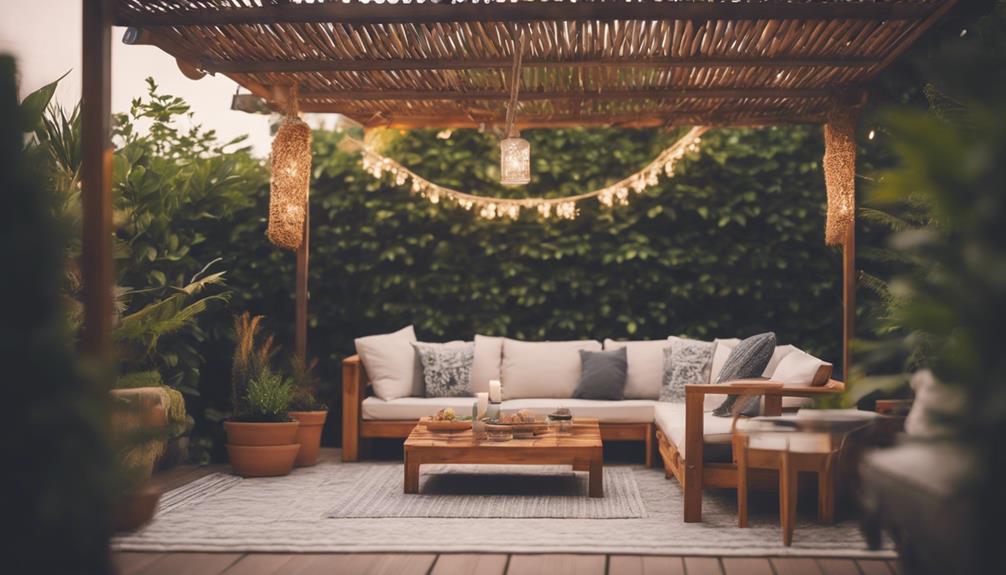
For alfresco roofs, selecting durable and weather-resistant furniture is essential for withstanding outdoor conditions. Here are some key points to bear in mind when choosing quality furniture for your alfresco space:
- Materials: Opt for furniture made from materials like teak, aluminum, and synthetic wicker, known for their durability and ability to withstand outdoor elements.
- Fabrics: Look for cushions and fabrics that are UV-resistant and quick-drying to guarantee long-lasting comfort and prevent damage from sun exposure.
- Maintenance: Choose furniture with easy maintenance requirements to keep your alfresco area looking great with minimal effort.
- Size and Layout: Take into account the size and layout of your outdoor space when selecting furniture to create a comfortable and functional area that suits your needs.
Decor Ideas for Alfresco Roofs
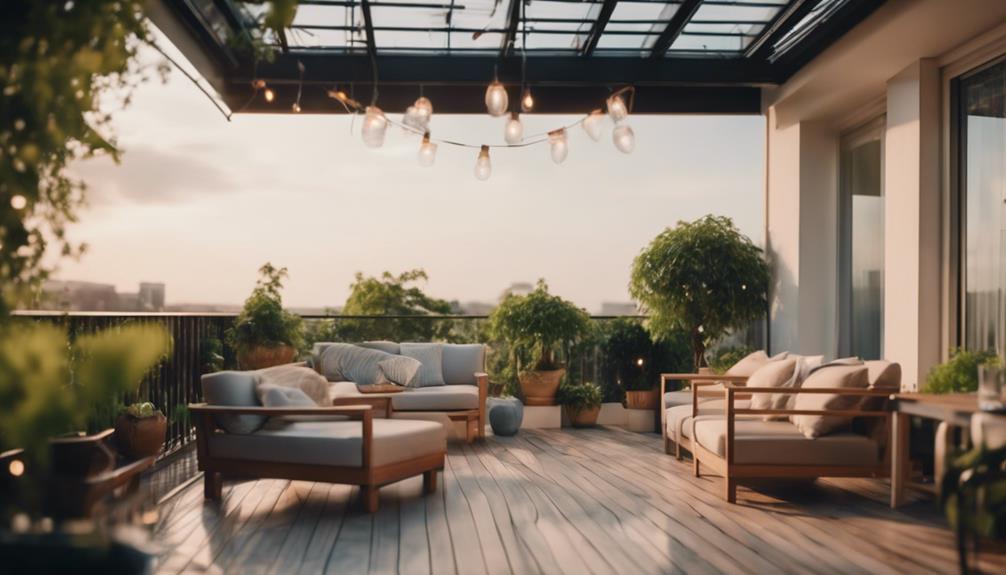
When contemplating decor ideas for your alfresco roof, it's crucial to blend style with functionality. Integrated lighting can create a cozy ambiance for evening gatherings, while awning roofs offer practical, watertight solutions.
Explore contemporary designs like IQ Outdoor Living Pods with retractable features for a seamless al fresco dining experience.
Stylish Alfresco Roof Decor
Enhance your alfresco roof space with stylish decor elements like hanging lights, lanterns, and fairy lights for a cozy ambiance. To transform your outdoor living area into a stylish retreat, consider incorporating the following decor ideas:
- Potted Plants: Add greenery and freshness by placing potted plants strategically around the alfresco roof.
- Hanging Baskets: Hang colorful flower baskets to bring a pop of color and vibrancy to the space.
- Vertical Garden: Install a vertical garden to maximize space and create a lush backdrop for your alfresco area.
- Outdoor Rugs: Define different zones within the outdoor living space using outdoor rugs, adding both comfort and style to the setting.
Functional Alfresco Roof Designs
Consider incorporating practical design elements to enhance the functionality of your alfresco roof space. When planning your alfresco area, integrating features like integrated lighting can create a cozy ambiance for evening gatherings around your outdoor kitchen.
Louvre roof systems offer adjustable shading and ventilation, allowing you to customize the environment in your al fresco dining area.
Walls surrounding your alfresco roof can be tailored to optimize airflow while providing privacy for your outdoor space.
Additionally, modular systems within your alfresco roof design can accommodate large dining tables, making it easier to host gatherings and create a seamless indoor-outdoor experience.
Entertainment Features for Alfresco Roofs
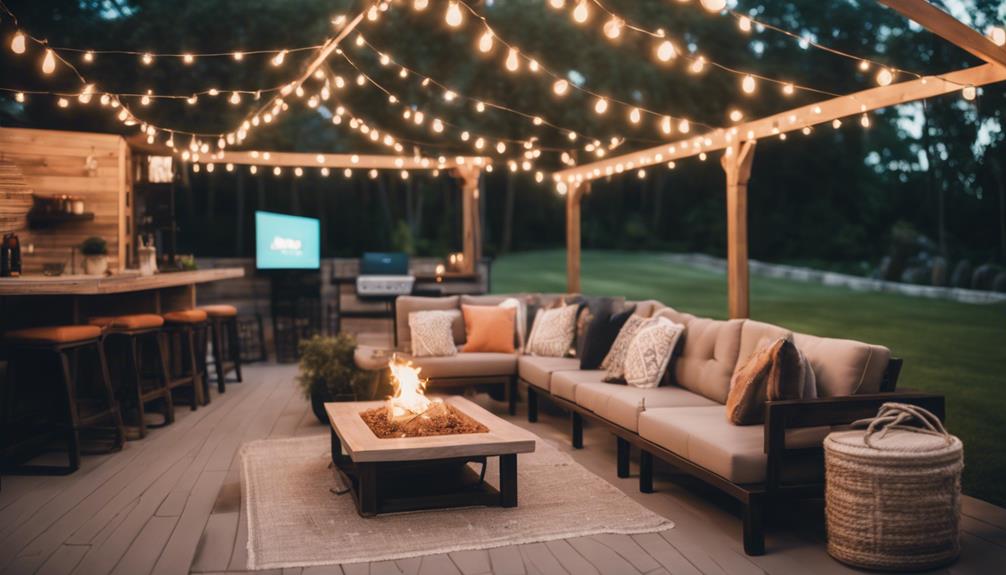
Integrated lighting is a key entertainment feature for alfresco roofs, allowing for adjustable evening illumination.
To enhance the entertainment value of your alfresco space, consider the following features:
- Retractable Awnings: These versatile additions provide shade during the day and can be retracted to enjoy the starlit sky at night.
- Louvre Roofs: With adjustable slats, louvre roofs allow you to control the amount of sunlight and ventilation, creating the perfect ambiance for gatherings.
- Sliding Glass Doors: Incorporating sliding glass doors in your alfresco roof design not only enhances ventilation but also seamlessly connects your outdoor kitchen to the alfresco space, making it ideal for entertaining.
- Customizable Walls: Opt for walls that can be adjusted to allow airflow while maintaining comfort, ensuring your guests are at ease during social gatherings.
Technology Integration in Alfresco Roofs
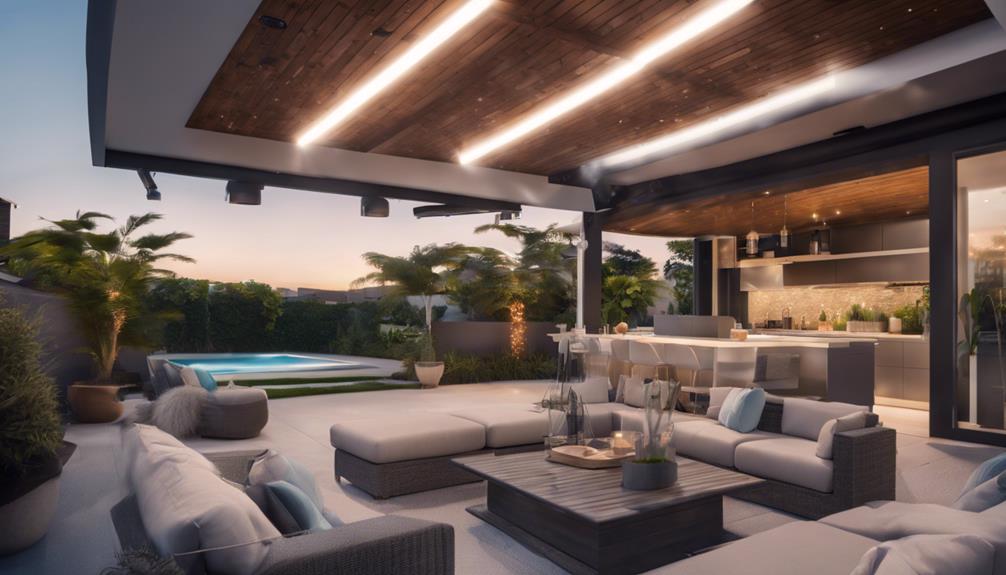
When contemplating technology integration in alfresco roofs, it's crucial to explore smart home connectivity and innovative lighting solutions.
Smart home connectivity enables you to seamlessly extend your indoor technology outdoors, creating a cohesive living experience.
Innovative lighting solutions can enhance the ambiance of your alfresco space, adding both functionality and aesthetic appeal.
Smart Home Connectivity
Enhance your alfresco roof experience with seamless smart home connectivity, enabling remote control of various features through your smart devices. Here are some key aspects of smart home connectivity in outdoor alfresco roofs:
- Remote Control: Adjust settings such as louvres, lighting, and heating from anywhere using your smartphone or tablet.
- Customization: Personalize your alfresco experience by setting preferences for different scenarios or times of the day.
- Weather Adaptation: Smart sensors can automatically adjust roof settings based on changing weather conditions to guarantee maximum comfort.
- Voice Control: Integration with virtual assistants like Alexa or Google Home allows for convenient voice commands to operate alfresco roof features effortlessly.
With these advanced technological features, smart home connectivity not only adds convenience but also enhances the functionality and versatility of your alfresco roof, creating a more enjoyable outdoor living space for you to relax and entertain in.
Innovative Lighting Solutions
To enhance the ambiance and functionality of alfresco roofs, innovative lighting solutions seamlessly integrate technology for a versatile outdoor living experience.
Integrated lighting in alfresco roofs offers adjustable evening lighting, creating a cozy and inviting atmosphere for gatherings or relaxation.
Through technology integration, outdoor speakers and sound systems can be incorporated into alfresco areas, providing an immersive audio experience for entertainment or relaxation.
Moreover, the installation of outdoor TVs or projectors enhances the versatility of alfresco spaces, offering various entertainment options for occupants.
With Wi-Fi connectivity, seamless integration of indoor technologies into alfresco living areas becomes possible, allowing for a connected and convenient outdoor experience.
These innovative lighting solutions not only elevate the functionality of alfresco roofs but also contribute to their stylish appeal, blending technology seamlessly into outdoor environments for a modern and comfortable living space.
Creating Different Zones in Alfresco Roofs
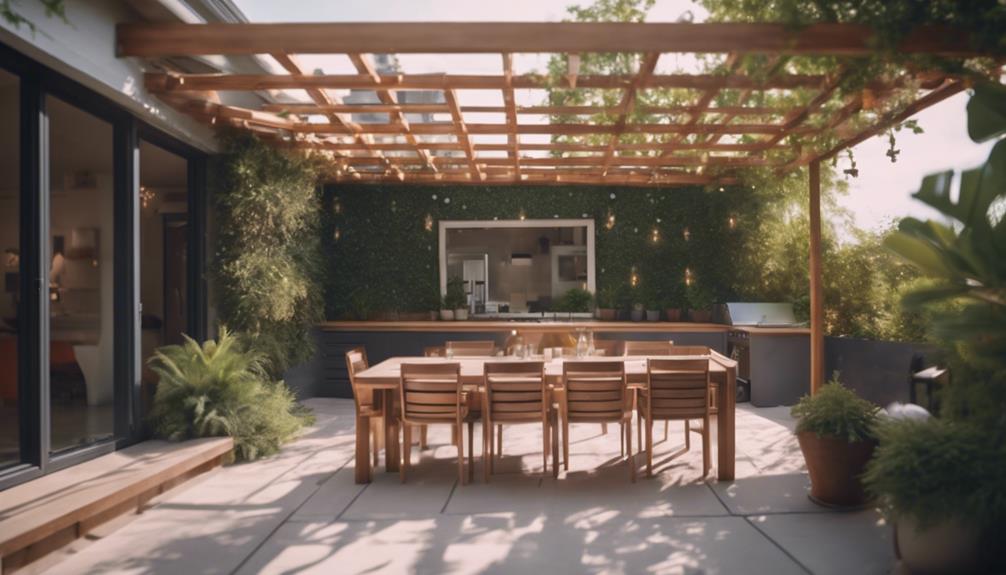
Designing different zones in your alfresco roof can greatly enhance its functionality and usability. By creating distinct areas within your alfresco space, you can cater to various activities and needs, making the area more versatile and appealing.
Here are four key ways to divide your alfresco roof into different zones:
- Patio Area: Designate a specific spot for lounging or relaxation, complete with comfortable seating options and perhaps a cozy fire pit for cooler evenings.
- Dining Area: Set aside a separate zone for dining, equipped with a sturdy table and chairs, where you can enjoy meals with friends and family in the open air.
- Entertainment Zone: Create a space for entertainment, such as a designated area for a barbecue or a small outdoor kitchen setup for hosting gatherings.
- Green Oasis: Incorporate a section with plants, flowers, or even a small garden to add a touch of nature and tranquility to your alfresco roof.
Transforming Alfresco Spaces Into Outdoor Retreats
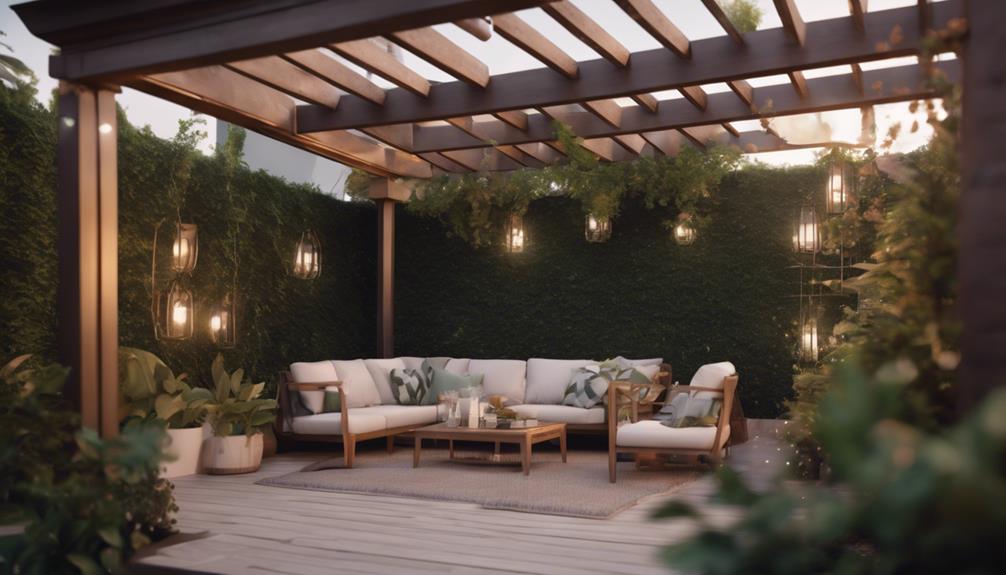
Alfresco spaces can be effortlessly transformed into inviting outdoor retreats with the right design elements and amenities.
Create the perfect stylish outdoor oasis by incorporating alfresco roofs that not only provide protection from the elements but also offer a seamless blend of functionality and aesthetics.
These roofs, such as the innovative louvre roof systems with automated weathertight solutions and solar shading capabilities, allow for year-round use of outdoor areas while enhancing the overall ambiance.
Frequently Asked Questions
What Is an Alfresco Roof?
An alfresco roof is a cover structure that extends your outdoor living spaces, offering protection from the elements. It seamlessly connects your indoor and outdoor areas, providing a stylish and functional space for year-round enjoyment.
What Does Al Fresco Style Mean?
Imagine the allure of dining under the stars, connecting with nature. Al Fresco style means embracing the outdoors, blurring the lines between inside and outside living. It's about fresh air, open spaces, and seamless shifts.
What Does an Alfresco Mean?
An alfresco means an outdoor living space with features like outdoor kitchens and dining areas. It's an extension of your home under the main roof, perfect for dining, entertaining, and relaxing in the fresh air.
What Is the Difference Between Patio and Alfresco?
When comparing a patio and an alfresco, remember that an alfresco is a covered outdoor space attached to the house, offering year-round usability and protection from the elements, with features like outdoor kitchens for seamless indoor-outdoor living.
Conclusion
To sum up, Alfresco Roofs offer both functionality and style to outdoor spaces, providing a versatile and weatherproof solution for maximizing your outdoor living experience.
By incorporating quality furniture, stylish lighting, entertainment features, and technology integration, you can transform your alfresco space into a luxurious outdoor retreat.
Consider creating different zones to cater to various activities and preferences, making your alfresco roof a truly unique and enjoyable outdoor oasis.
Embrace the possibilities of alfresco living and elevate your outdoor lifestyle today!
Alfresco
What Is Alfresco Seating? Comfort and Style Outdoors!
Cultivate your outdoor oasis with alfresco seating, where comfort and style converge for a dining experience like no other.
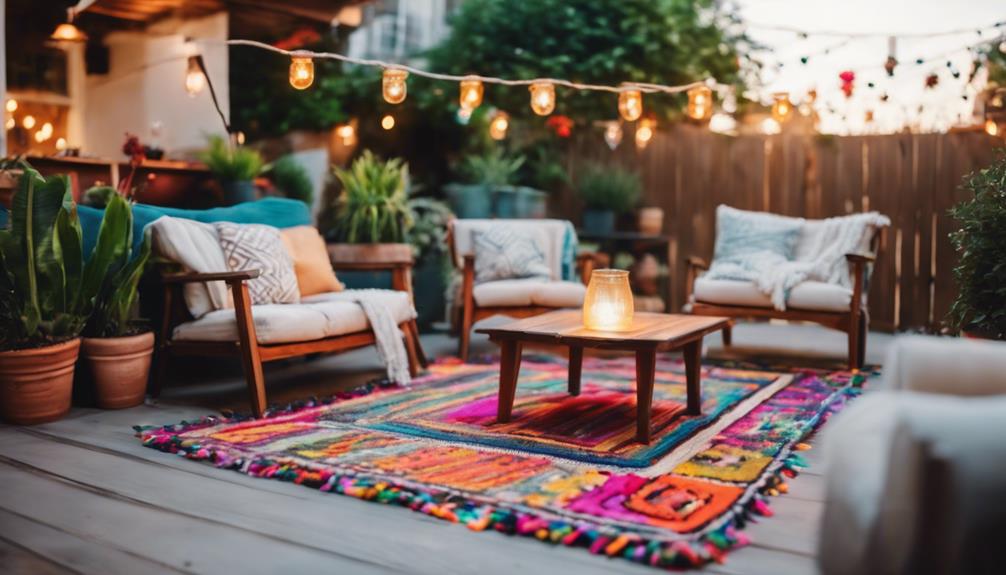
Step into the world of alfresco seating, where elegance meets nature in a harmonious blend of comfort and style. Originating from the Italian phrase 'al fresco,' this concept promises an immersive outdoor dining experience that transcends mere meals. With a rich historical background dating back to medieval times, alfresco seating has become a global trend, cherished across cultures for its emphasis on ambiance and relaxation. Seasonal adaptations guarantee year-round enjoyment, while versatile designs offer a plethora of customizable options. Venture further into this domain of outdoor sophistication to uncover the secrets of creating the perfect alfresco sanctuary.
Key Takeaways
- Alfresco seating offers a comfortable and stylish outdoor dining experience.
- It connects you with nature, promoting relaxation and rejuvenation.
- Versatile seating arrangements cater to different preferences and occasions.
- Outdoor furniture is customizable, durable, and aesthetically pleasing.
- Enhance ambiance with lighting, decor, and weather-resistant furniture.
Definition of Alfresco Seating
When dining or lounging outdoors in the fresh air, you're engaging in alfresco seating. This outdoor dining experience allows you to immerse yourself in the beauty of nature while enjoying your meal or relaxation time.
Alfresco dining provides a unique setting that connects you with the environment surrounding you. The term 'alfresco' finds its roots in the Italian phrase 'al fresco,' which translates to 'in the fresh air.' From casual picnics to more upscale dining experiences, alfresco seating offers a versatile range of options for outdoor seating arrangements.
Alfresco seating has gained popularity not only for its aesthetic appeal but also for the health benefits it provides. Being in the fresh air can have positive effects on your overall well-being. Whether you're savoring a meal under the open sky or simply unwinding in a natural setting, alfresco dining offers an invigorating change from indoor dining experiences.
Historical Background
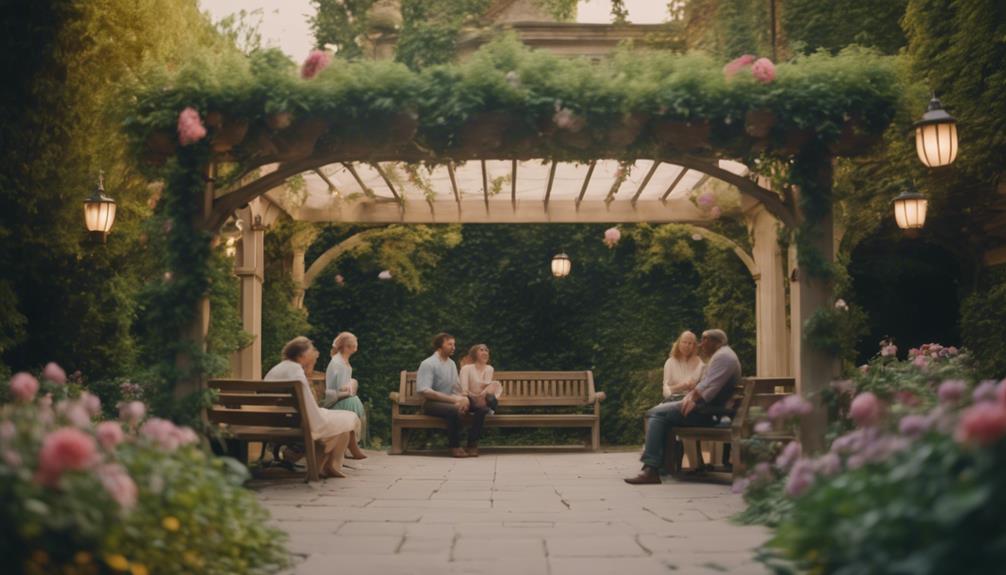
Alfresco seating traces its origins back to medieval times and has since evolved into a popular dining trend, offering a unique outdoor dining experience.
The concept stemmed from the Italian phrase 'al fresco,' emphasizing the pleasure of dining in the fresh air.
This historical background sets the stage for understanding the evolution of outdoor comfort and the enduring appeal of alfresco seating across various cultures.
Origins of Alfresco Seating
The historical roots of outdoor dining, known as alfresco seating, can be traced back to medieval times when it became a cherished pastime celebrated across various cultures. People have long enjoyed dining al fresco, appreciating the connection to natural beauty and the joy of outdoor space. The term 'alfresco' stems from the Italian phrase 'al fresco,' which translates to 'in the fresh air.' This style of dining has been embraced in cultures worldwide, including Italian, English, French, Spanish, and American.
| Cultures Celebrating Alfresco Seating |
|---|
| Italian |
| English |
| French |
| Spanish |
| American |
Alfresco seating offers a unique dining experience, focusing on the ambiance of fresh air, relaxation, and the beauty of nature. It is a delightful way to enjoy a meal while embracing the outdoors and creating memorable moments in serene surroundings.
Evolution of Outdoor Comfort
Throughout history, the evolution of outdoor comfort has been marked by a continuous quest to enhance dining experiences in natural settings. Dating back to medieval times, alfresco seating has been a celebrated pastime, evolving to offer a unique dining experience with fresh air and relaxation. Various cultures, including Italian, English, French, Spanish, and American, have embraced alfresco seating, adapting outdoor dining spaces to cater to different preferences, from casual picnics to upscale dining experiences.
The evolution of outdoor comfort emphasizes connections to nature and health benefits across different cultures. This evolution highlights the importance of enjoying meals in the open air, fostering a sense of well-being and harmony with the natural world. By providing spaces that allow individuals to dine while surrounded by the beauty of nature, outdoor comfort has become a symbol of tranquility and a way to escape the confines of indoor dining.
Versatility in Design
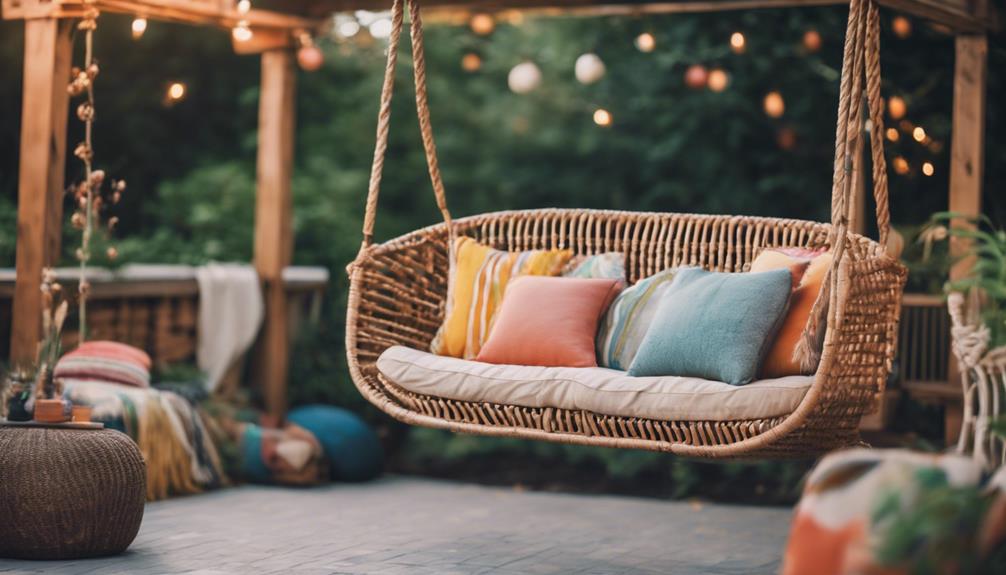
When it comes to alfresco seating design, the versatility is truly remarkable.
Customizable outdoor furniture allows you to create a space that suits your needs perfectly.
With functional layout options and a plethora of style choices, the design possibilities are endless.
Customizable Outdoor Furniture
Explore the versatility of customizable outdoor furniture, offering personalization options to suit your unique style preferences and space constraints.
When considering customizable outdoor furniture, you'll find:
- Diverse Material Options: From the timeless elegance of teak to the modern appeal of aluminum, customizable outdoor furniture incorporates a variety of materials like rattan and wicker, blending durability with style.
- Adaptable Features: Enjoy the flexibility of modular pieces, interchangeable cushions, and adjustable components that enhance the functionality of customizable outdoor furniture, allowing you to tailor your outdoor seating to your needs.
- Range of Furniture Types: Whether you desire sectional sofas, dining sets, lounge chairs, or coffee tables, customizable outdoor furniture provides a plethora of options to create a cohesive and inviting alfresco seating area that reflects your personality.
With the ability to mix and match different pieces and styles, customizable outdoor furniture opens up endless possibilities for designing a unique and comfortable outdoor space that meets your individual requirements.
Functional Layout Options
Discover how functional layout options in alfresco seating offer versatility in design, catering to a range of settings and occasions.
Alfresco seating areas can be transformed into inviting outdoor dining spaces through customizable seating arrangements. From cozy and intimate setups ideal for romantic dinners to spacious and communal arrangements perfect for gatherings, the design flexibility allows for a tailored experience.
In an outdoor dining area, essential layouts play a vital role in enhancing comfort, flow, and social interaction. By incorporating elements such as modular furniture, sectional sofas, and flexible seating configurations, alfresco seating designs can adapt to different group sizes and preferences.
These customizable seating arrangements provide the versatility needed to create an atmosphere that suits the occasion, whether it be a casual brunch with friends or a formal dinner party. Embrace the adaptability of functional layout options in alfresco seating to optimize your outdoor space for both comfort and style.
Style Choices Abound
Numerous style choices are available in alfresco seating, offering versatility to cater to diverse preferences and settings. When it comes to designing your alfresco dining area, the options are plentiful, allowing you to create a space that perfectly suits your taste and outdoor ambiance.
Here are three key elements to take into account:
- Comfortable Seating: Whether you prefer plush cushions on a cozy loveseat or the simplicity of sleek metal chairs, ensuring comfortable seating is essential for enjoying long meals or gatherings outdoors.
- Outdoor Rug: Adding an outdoor rug can instantly elevate the style of your alfresco seating area. Choose from a variety of designs and colors to tie the space together and create a cozy atmosphere underfoot.
- Versatile Materials: From natural wood to elegant wrought iron, the material of your furniture can greatly influence the overall look and feel of your outdoor space. Selecting the right materials can help achieve the aesthetic you desire, whether it's modern and minimalist or rustic and inviting.
Connection to Nature
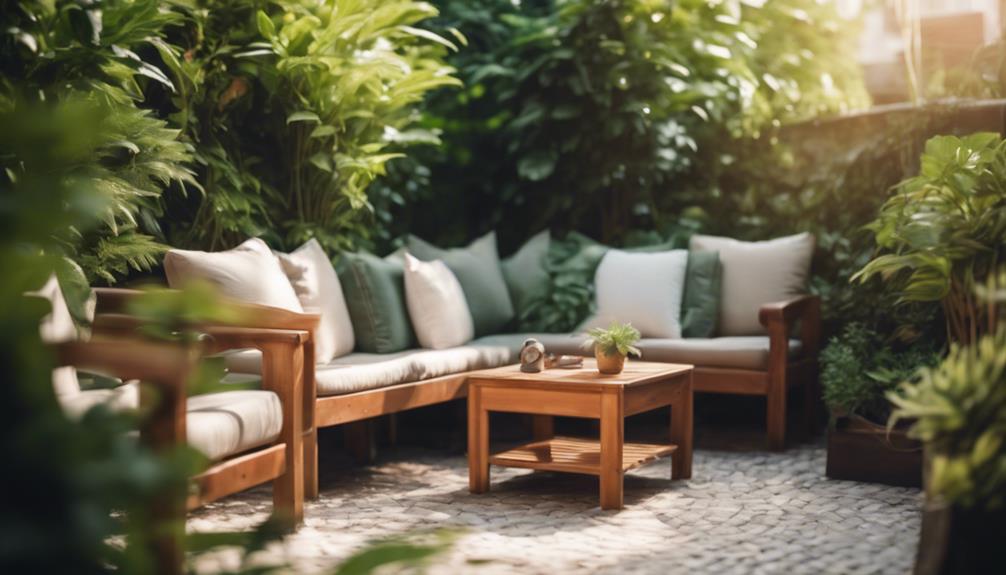
An alfresco seating arrangement offers a direct and immersive connection to nature, enhancing the dining experience with fresh air, natural light, and scenic views.
Dining outside in an alfresco setting not only allows for outdoor entertaining but also provides a profound connection to nature. Research indicates that spending time in nature can decrease stress levels and enhance overall well-being, making alfresco seating a valuable asset for mental health.
The presence of outdoor greenery and flora near alfresco seating can further amplify this connection, fostering a serene and peaceful atmosphere. The inclusion of natural elements like trees, flowers, and the invigorating freshness of the air contributes significantly to a sense of renewal and connectivity with the environment while relishing meals outdoors.
Embracing alfresco seating not only enriches the dining experience but also nurtures a deeper bond with nature, promoting relaxation and rejuvenation in a harmonious outdoor setting.
Seasonal Adaptations
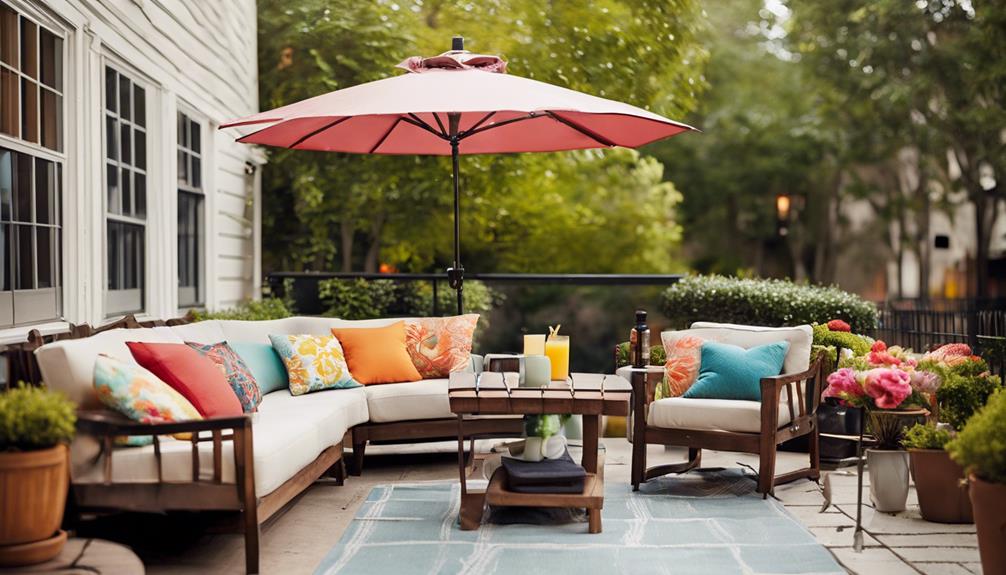
When planning alfresco seating arrangements, consider seasonal adaptations to guarantee year-round comfort and enjoyment outdoors. To ensure your outdoor space is versatile and inviting throughout the changing seasons, here are three key considerations:
- Outdoor Heating Solutions: Explore options like fire pits, patio heaters, or heated blankets to extend the usability of your alfresco seating area into colder months.
- All-Weather Pieces: Invest in furniture and decor made from durable materials like powder-coated steel and Sunbrella fabric to withstand varying weather conditions and maintain a fresh appearance.
- Seasonal Adaptations: Be mindful of the specific seasonal patterns in your region to tailor your outdoor seating setup accordingly, maximizing the enjoyment of your outdoor space year-round.
Setting Up Outdoor Seating
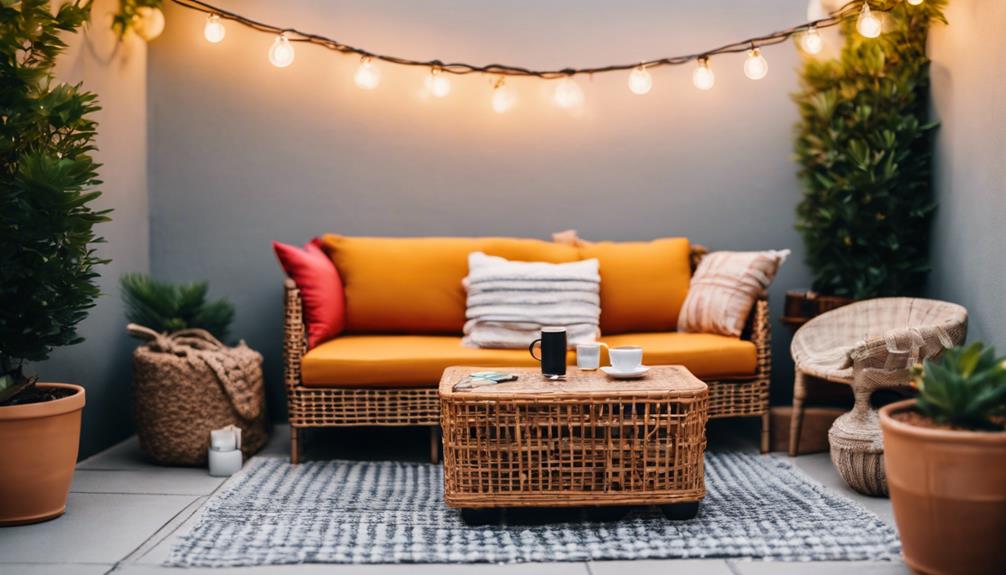
When setting up your outdoor seating area, it's essential to choose the right furniture that can withstand the elements while providing comfort and style.
Enhancing the ambiance with carefully selected decor can create a welcoming atmosphere for gatherings and relaxation.
With a focus on both durability and aesthetics, your outdoor space can become a retreat where guests can unwind and socialize in comfort.
Choosing the Right Furniture
For setting up outdoor seating, your primary focus should be selecting weather-resistant furniture that offers durability and style. When choosing the right furniture for your alfresco dining area, consider the following:
- Opt for a Dining Table:
A sturdy and stylish dining table is essential for hosting al fresco dining experiences. Look for materials like teak or aluminum that can withstand outdoor elements while adding an elegant touch to your space.
- Invest in Comfortable Seating:
Select seating options that prioritize comfort, such as deep-seated lounge chairs or sectional sofas. Enhance the coziness with plush cushions and throws made from Sunbrella fabric, ensuring both durability and style.
- Provide Ample Seating Options:
To accommodate extended gatherings, choose seating arrangements that offer ample space for your guests. Consider versatile pieces that can be easily rearranged to suit different occasions while maintaining a cohesive and inviting outdoor atmosphere.
Enhancing Ambiance With Decor
Enhance the ambiance of your outdoor seating area by incorporating string lights, solar lanterns, and candles for a magical and inviting atmosphere. As the sun sets, these lighting elements transform outdoor spaces into enchanting settings, perfect for any special occasion.
To prioritize comfort, consider adding plush cushions, throws, and stylish furniture to your outdoor seating arrangements. Weather-resistant furniture and greenery can create a cozy atmosphere, enhancing the outdoor experience for you and your guests.
Potted plants, hanging baskets, and fresh floral arrangements can bring vibrancy and freshness to your outdoor seating area, adding a touch of nature's beauty to your decor. Whether you're hosting a gathering or simply relaxing outdoors, these decor elements can elevate the ambiance and make your alfresco seating area a welcoming and visually appealing space for all to enjoy.
Choosing Outdoor Tables
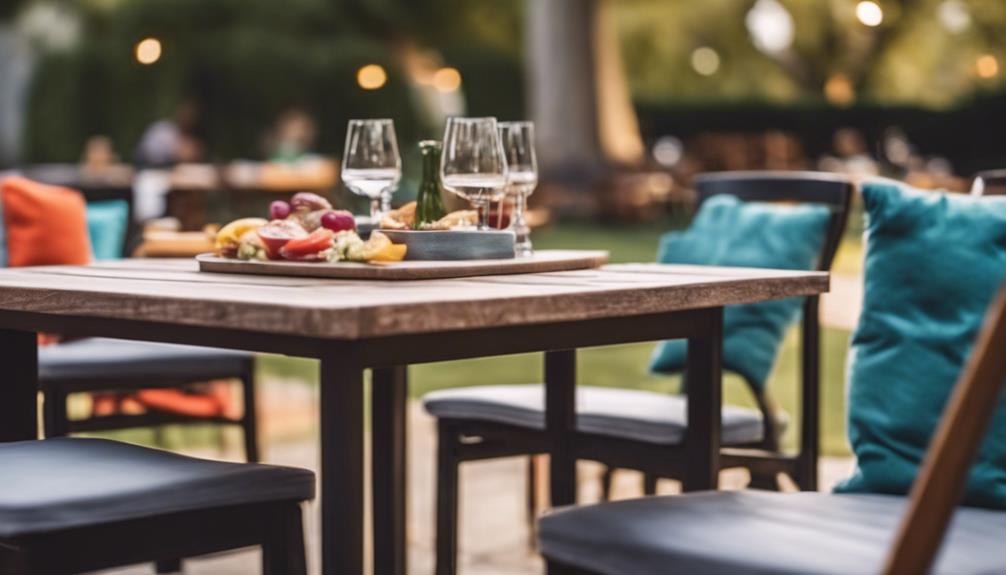
Consider the durability and style of outdoor tables when selecting the perfect fit for your alfresco seating area.
When choosing an outdoor table for your dining space, keep these key points in mind:
- Weather-Resistance: Opt for materials like teak, aluminum, or polyethylene that are known for their ability to withstand outdoor elements, guaranteeing your table remains in top condition for years to come.
- Size Matters: Select a table size that suits your dining needs, whether you prefer intimate gatherings or hosting large outdoor parties. Make sure the table can comfortably accommodate the number of guests you typically entertain.
- Versatile Features: Look for outdoor tables with practical features such as adjustable legs or extensions. These elements add versatility to your dining setup, allowing you to adapt the table to different occasions effortlessly.
Creating Ambiance Outdoors
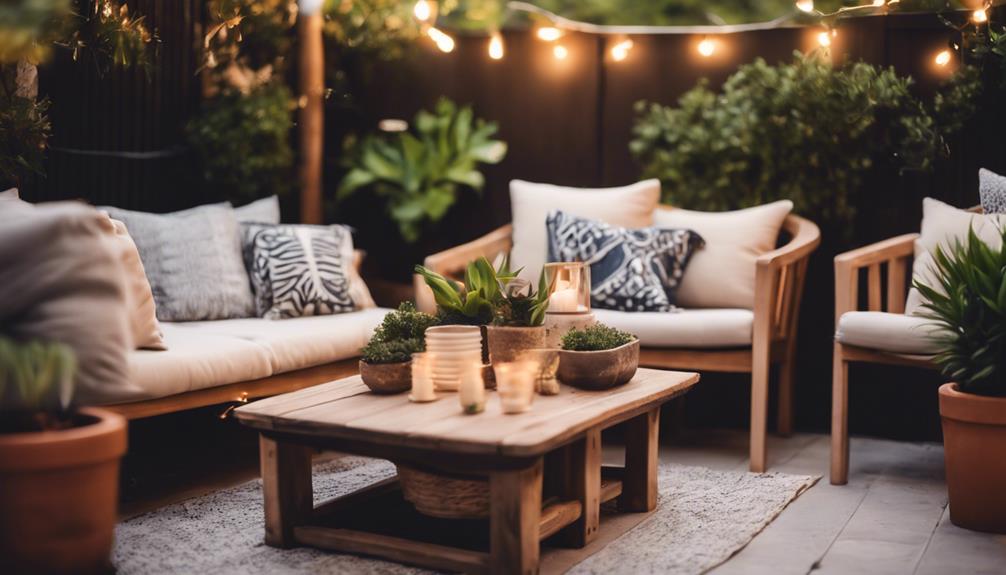
When setting up your alfresco seating area, don't overlook the importance of creating a charming outdoor ambiance. Enhance the outdoor ambiance by incorporating elements like string lights, solar lanterns, and candles, transforming your outdoor space into a magical setting as the sun sets.
Strategic lighting choices can add warmth and ambiance, setting the perfect mood for your outdoor gatherings. Utilize outdoor lighting to enhance the overall atmosphere, creating an enchanting environment that invites relaxation and enjoyment.
By carefully selecting and placing lighting elements, you can craft a space that exudes charm and sophistication. Remember, the right lighting can make all the difference in how your outdoor area feels and functions.
Patio Dining Spaces
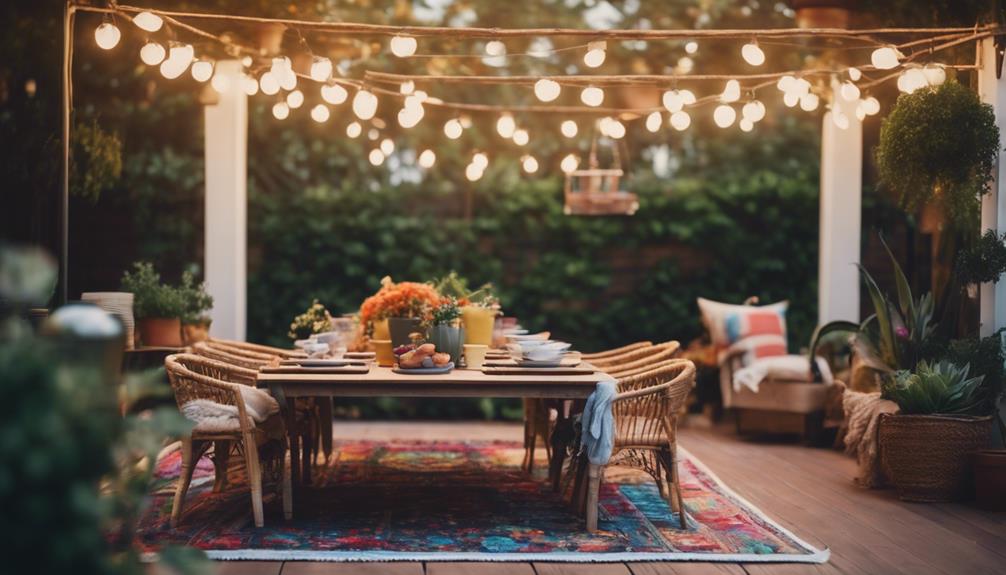
Patio dining spaces often serve as inviting areas for alfresco seating, providing a cozy and intimate setting for outdoor dining experiences.
When it comes to creating the perfect patio dining space, consider the following:
- Comfortable Seating: Opt for durable and functional furniture that can withstand outdoor elements while offering comfort to your guests during meals under the open sky.
- Versatility in Seating Arrangements: Patio dining areas are versatile, catering to small gatherings or larger parties. They can accommodate different seating arrangements, ensuring everyone has a place at the table.
- Enhancements with Fire Pits: Adding fire pits can elevate the ambiance of your patio dining space, providing warmth and a focal point for gatherings. Whether for roasting marshmallows or simply enjoying the crackling flames, fire pits can create a cozy atmosphere for outdoor dining.
Seasonal Considerations

As you plan your outdoor dining space, factor in the impact of seasonal variations on your alfresco seating experience. To guarantee comfort and enjoyment in all weather conditions, consider incorporating elements that provide protection from the elements and add warmth and ambiance to your outdoor setting. Investing in quality materials such as powder-coated steel and Sunbrella fabric can help your alfresco seating endure various seasonal conditions.
| Seasonal Ingredients | Add Warmth and Ambiance | Protection from the Elements |
|---|---|---|
| Fresh produce and herbs can complement your outdoor dining experience. | Fire tables or patio heaters can extend your outdoor dining season. | Quality materials like powder-coated steel and Sunbrella fabric offer durability. |
Frequently Asked Questions
What Is the Meaning of Alfresco Seating?
Alfresco seating means dining or lounging outdoors in a comfortable and stylish setting. It offers an invigorating experience of enjoying food and relaxation in the fresh air. Outdoor arrangements are designed to enhance your comfort and style.
What Does Alfresco Style Mean?
Alfresco style means embracing outdoor living, enjoying nature's beauty while creating a stylish and comfortable setting. It's about relaxing in the fresh air, savoring meals under the open sky, and immersing yourself in a casual, inviting atmosphere.
What Is Outdoor Alfresco?
When considering outdoor alfresco spaces, you envision dining under the open sky, breathing in fresh air, and enjoying meals in a natural setting. These spaces bring a sense of connection to the outdoors, enhancing your dining experience.
What Is the Purpose of Alfresco Dining?
You think alfresco dining is just about eating outside. But it's more than that. It's about connecting with nature, unwinding, and creating memorable moments. Alfresco dining enhances social bonds and promotes well-being.
Conclusion
To sum up, alfresco seating offers a perfect blend of comfort and style for outdoor dining experiences.
As the saying goes, 'dine with nature,' alfresco seating allows you to connect with the outdoors while enjoying a meal in a versatile and inviting space.
With the right design elements and seasonal adaptations, alfresco seating can transform any outdoor area into a cozy and stylish dining oasis.
So why not take advantage of alfresco seating to enhance your outdoor dining experience?
-

 Vetted2 months ago
Vetted2 months ago14 Best Personalized Father's Day Gifts for Your Husband – Show Him You Care
-

 Alfresco1 month ago
Alfresco1 month agoAlfresco Stacker Doors: Seamless Indoor-Outdoor Living!
-

 Craft and Textiles3 months ago
Craft and Textiles3 months ago15 Best Places to Buy Appliances for Your Home – Top Retailers Reviewed
-

 Decorative Throws3 months ago
Decorative Throws3 months agoIs It Better to Dry Clean Blankets?
-

 Tableware and Dining Accessories3 months ago
Tableware and Dining Accessories3 months agoWhat Is the Meaning of the Word Tableware
-

 Tableware and Dining Accessories3 months ago
Tableware and Dining Accessories3 months agoWhat Is the Hindi Meaning of Tableware
-

 Craft and Textiles3 months ago
Craft and Textiles3 months ago15 Best Cordless Mowers for Effortless Lawn Care – Top Picks of 2024
-

 Yarn3 months ago
Yarn3 months agoIs Yarn Natural or Manmade? Unravel the Truth






















